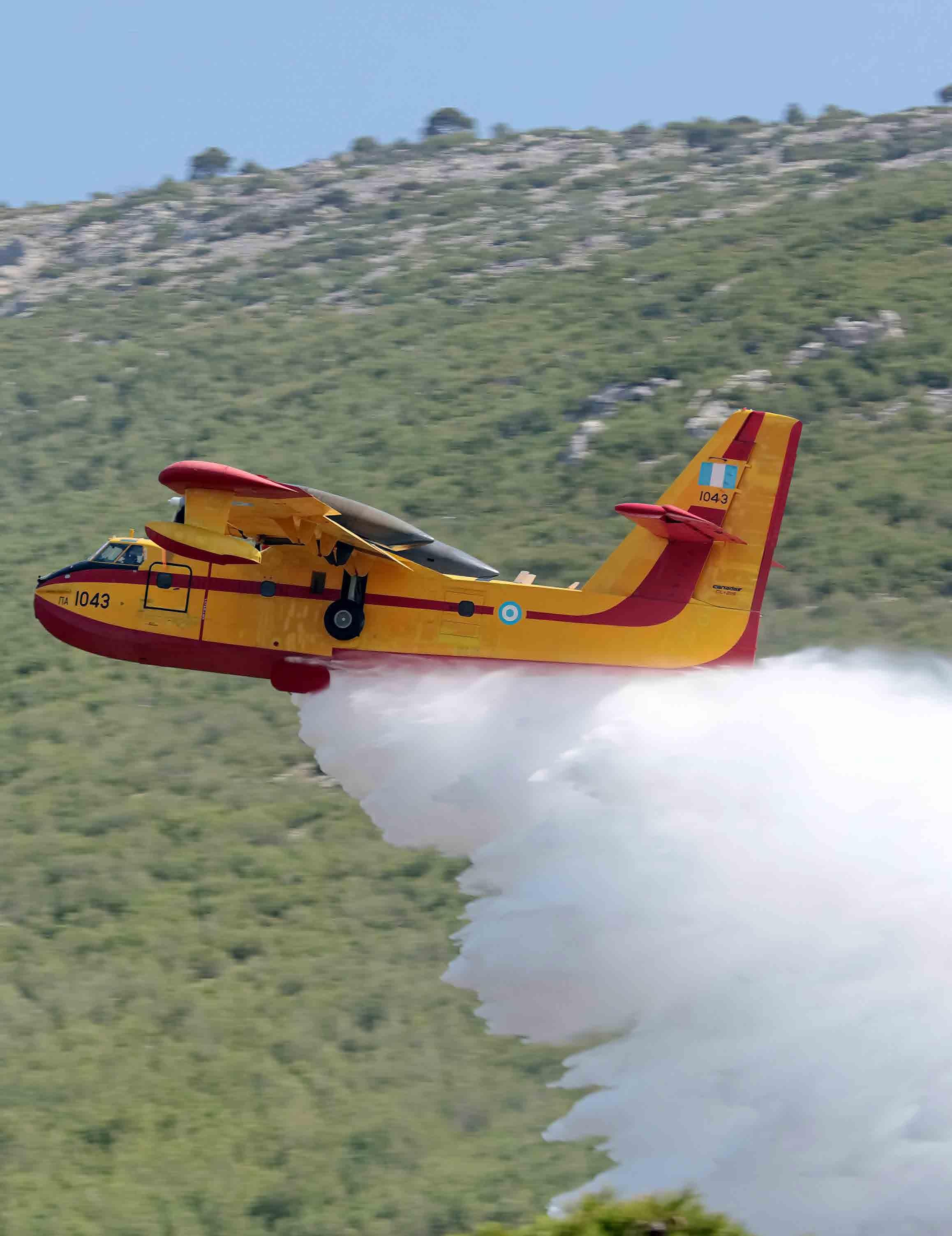







For sixty years, PHOS-CHEK® has represented innovation in support of firefighting operations around the world. This innovation has always been driven by the needs of the firefighting community – helping them operate effectively and safer when they risk their lives to protect our forests, our communities and our lives.
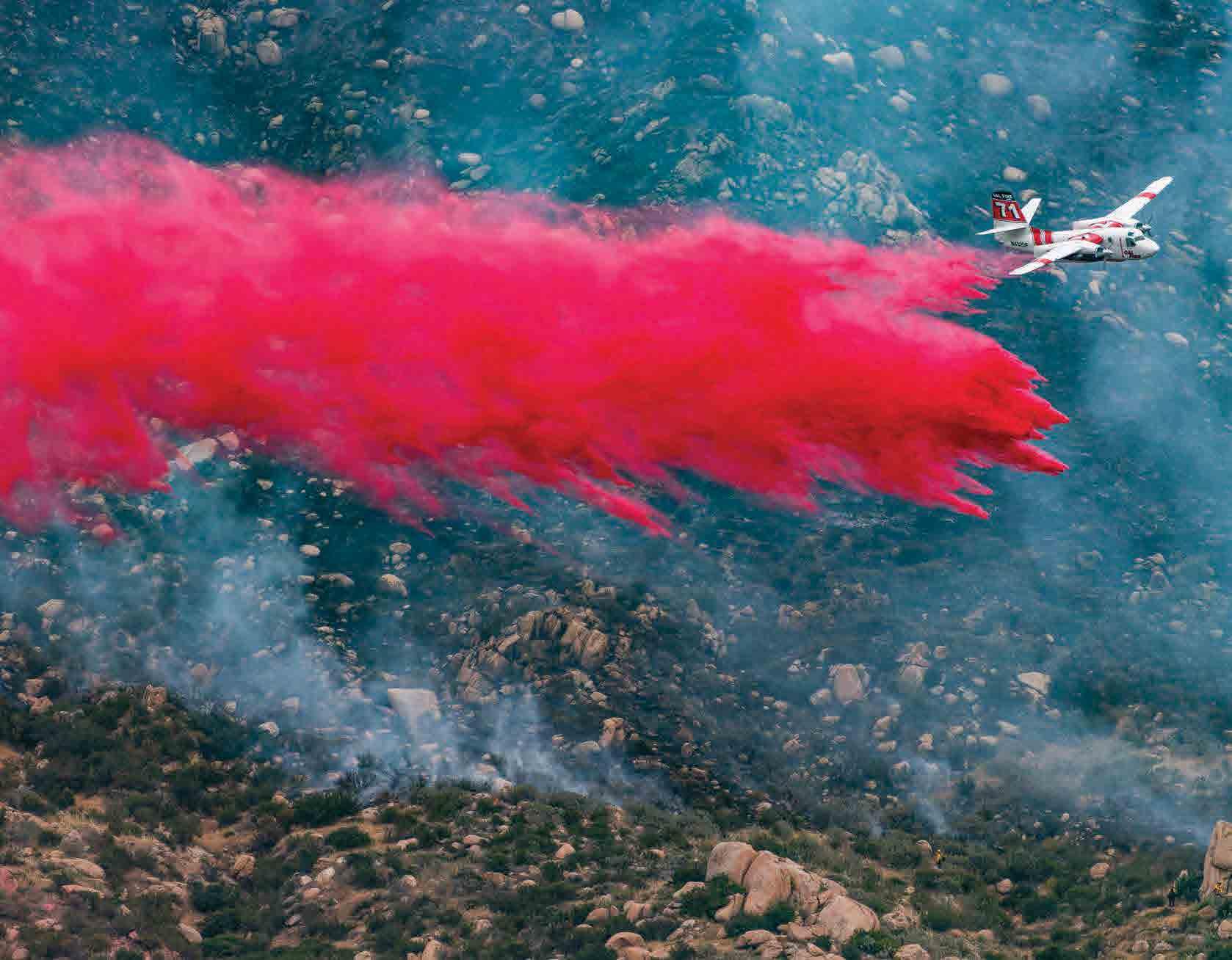

At Perimeter Solutions, we couldn’t be prouder of our work as PHOS-CHEK celebrates its 60th anniversary, and we are committed to continuing our innovation and support for the next sixty years!
Trusted. Solutions That Save.
perimeter-solutions.com
•
AERIALFIRE IS PUBLISHED BY

PUBLISHER:
Graham Lavender - graham@marsaylmedia.com
EDITOR IN CHIEF:
Ryan Mason - ryan@marsaylmedia.com

ACCOUNTING/ADMINISTRATION:
Casey Armstrong - casey@marsaylmedia.com
DISPLAY ADVERTISING:
Melanie Woodley - melanie@marsaylmedia.com
PRODUCTION:
Daniela Constantino - daniela@marsaylmedia.com
CIRCULATION:
Mary Jane Virden - maryjane@marsaylmedia.com
CONTRIBUTING WRITERS:
Robert Craymer - robertc@covingtonaircraft.com


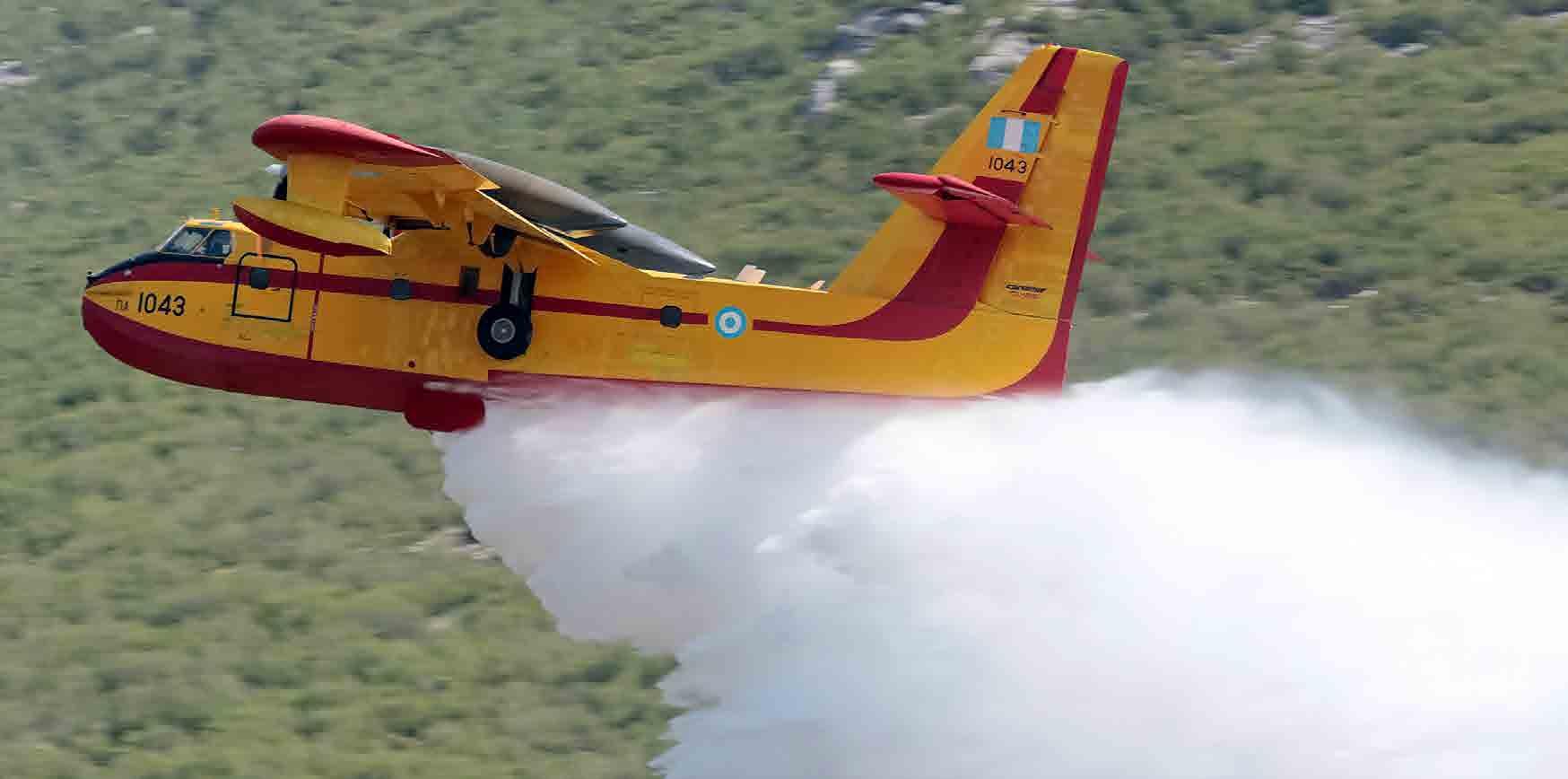
Igor Bozinovski - bozinovski.igor@gmail.com
Dan Reese - dan@intwcg.com
Paul Seidenman - avwriter@sbcglobal.net
Dave Soderstrom - davesoda727@hotmail.com
CONTRIBUTING PHOTOGRAPHERS:
Aaron Maurer Jeff Serpa
Dave Soderstrom Marty Wolin
Igor Bozinovski Kane Arlow
Marissa Fortney
© Copyright 2023 AerialFire retains all rights for reproduction of any material submitted, to include but not limited to articles, photographs, emails and bulletin board posts. All material remain the copyright of AerialFire. No part of this publication may be reproduced, in part or whole, without the written consent of the publisher. Editorial published do not necessary reflect the views of the publisher. Content within AerialFire is believed to be true and accurate and the publisher does not assume responsibility for any errors or omissions. Unsolicited editorial manuscripts and photos are welcomed and encouraged. We cannot be responsible for return unless submissions are accompanied by a stamped, self-addressed envelope. Advertising deadline is 12 noon, on the 1st of the month preceding the month of publication.
AerialFire Published bi-monthly by Blue Sky Investments, Inc., 475 Myrtle Field Road, Perry, GA 31069




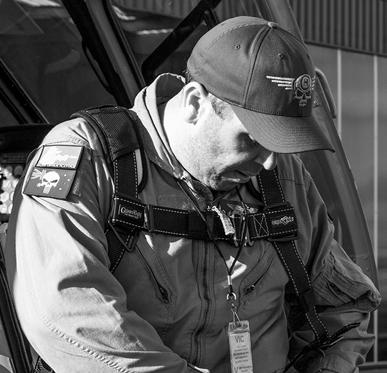
As someone who travels a great deal for AerialFire, you accept fatigue as part of your daily grind. Last month, I traveled to and from Australia for the AFF show and obtained future story content for the magazine.
As much as I try to limit my travel to a few days midweek, trying to be home on weekends, sometimes, like in the case of several international trips this year, the reality is that it just isn’t possible. Sometimes, I am gone for weeks because it is not feasible to zip back home on weekends, especially when you are 9,000 miles from home.
Add into that equation when you are traveling to multiple locations within a country, you are spending, at times, days inside airplanes and airports, which not only leads to

fatigue but, in my case, being run down can also make you susceptible to illness. My recent trip to Australia was 24 hours from door to door one way. I hear a lot of feedback from those who have never taken a 14-hour straight flight to Australia, saying they could never do 14 hours straight on a plane. The reality is that you just have to embrace the suck. Being originally from Australia, I have done it so often that I have it down to fine art. However, the fatigue you suffer from such long flights can indeed wear on you no matter what you do to prepare.
My ability to complete tasks requiring solid concentration or fine motor skills is diminished substantially at about hour 23 of my journey when I can only imagine getting into bed and adjusting to my time zone.
One thing I thought of as jetlag set in for the second time recently was how fatigue affects those in the aviation world. Flying in the hot and high-flight environment of the fireground is no doubt exhausting, and so is the journey to get to said location, be it ferrying the aircraft you are using during the firefight or arriving commercially.
Fatigue is something we often push to the side because we have work to do. In my case, meetings and conferences to attend or content to create. In the aerial firefighters’ mind, they have a fire to put out and an urgency to save lives and property. It is a noble cause, but one that encourages what I call “pressonitis.” Meaning that fatigue, sickness, or other concerns that could cause an issue in flight are pushed to the side to press on and get the job done.
In the air medical world, fatigue is taken very seriously. So seriously, a pilot or any medical crew member can call fatigue, stand down for a flight, or even go out of service for an entire shift if needed. Sure, if that became an issue over and over, it would be a different story, but if a crew has flown for 7 hours out of 12 and some of those missions involved physically taxing procedures like in-flight CPR, I could see fatigue becoming an issue. Maybe not for the pilot, but the pilot is only a bus driver without a medical crew.
Now factor that into aerial firefighting, say the lead plane pilot is tired from many hours of flying, and the air conditioning is out in his aircraft. Therefore, the heat is becoming more of an issue and causing undue fatigue. His tiredness causes a lapse in concentration that affects the accuracy in marking a drop location, which causes a retardant line to be dropped in the wrong location.




The reality of that particular scenario may be minor or significant if lives are lost. The more prevalent issue of fatigue in our industry is lack of concentration, leading to a crash. If you have been in the aviation industry long enough and read enough accident reports, I am sure you are familiar with the error chain.



Upon investigation, accidents can sometimes be traced back to events the day prior to incidents like lack of sleep or general fatigue that played a part in the accident chain. Any one of many contributing factors can lead to fatigue, but it is your job to recognize it and be the person who takes evasive action before it becomes a tragedy.






 CAL FIRE Tanker 72 fights the University Fire. Photo by Kaileen Hanigan.
A Coulson Aviation CH-47 drops a line of retardant during recent testing.
Photo by Marty Wolin.
CAL FIRE Tanker 72 fights the University Fire. Photo by Kaileen Hanigan.
A Coulson Aviation CH-47 drops a line of retardant during recent testing.
Photo by Marty Wolin.
 An Erickson MD-87 pulls out of a retardant drop on the Boulevard Fire. Photo by Aaron Maurer.
An Erickson MD-87 pulls out of a retardant drop on the Boulevard Fire. Photo by Aaron Maurer.

 An Italian Scooper comes in for a drop in Italy in July. Photo by Carlo Francesconi.
A Prado Helitack S-70i pulls up from taking a load of water.
Photo by Jason Sotelo.
An Italian Scooper comes in for a drop in Italy in July. Photo by Carlo Francesconi.
A Prado Helitack S-70i pulls up from taking a load of water.
Photo by Jason Sotelo.

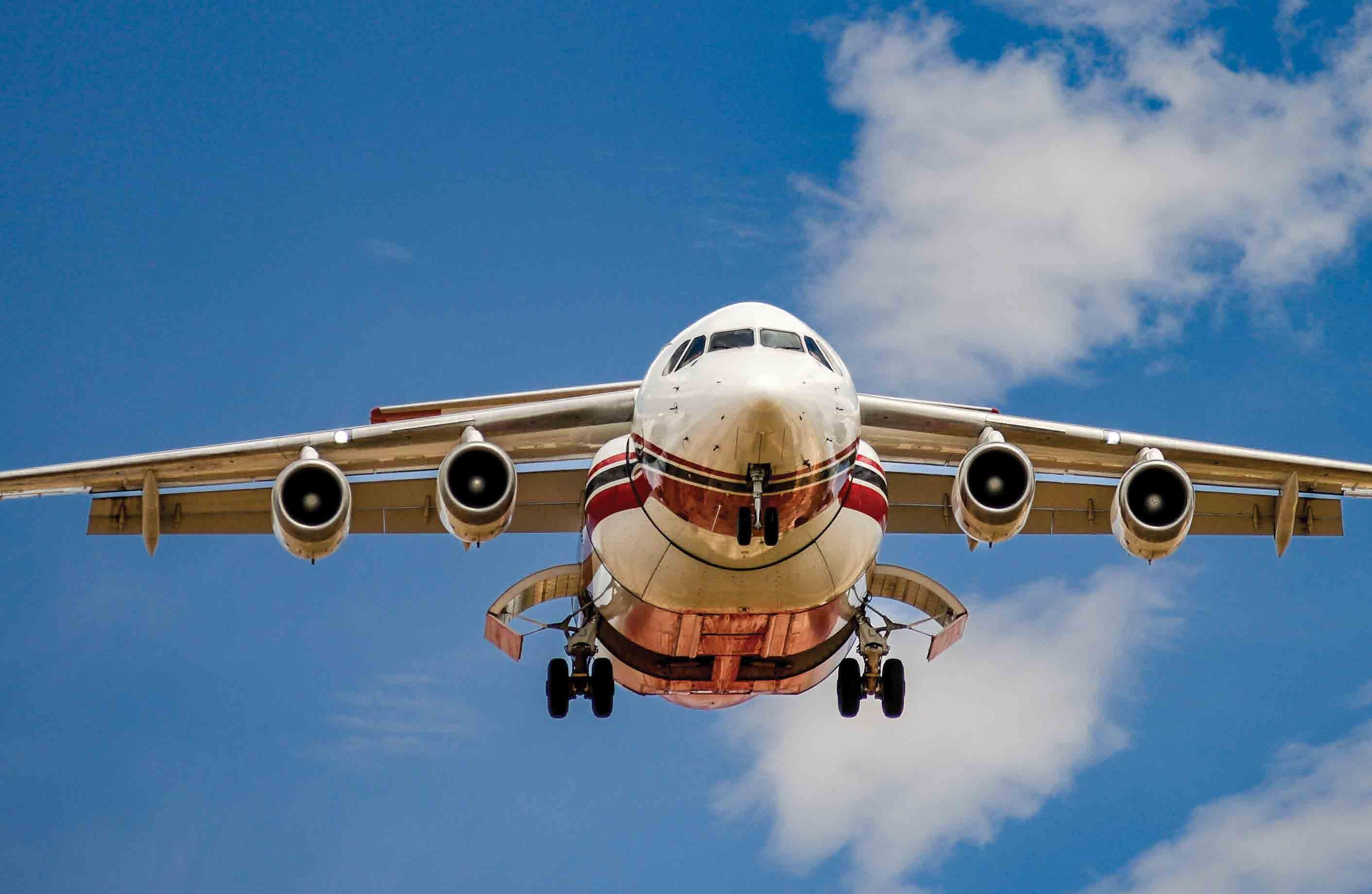 An Erickson Air Crane drops a load of water in Greece. Photo by John Pitsakis.
An Aeroflite RJ-85 comes in for landing. Photo by Cannon Carter.
An Erickson Air Crane drops a load of water in Greece. Photo by John Pitsakis.
An Aeroflite RJ-85 comes in for landing. Photo by Cannon Carter.
The year 2023 is marked by another severe wildfire season, with Canada losing over 30 million acres of land to the flames and Europe aflame. Sadly, lives have been lost in both fixed-wing and rotor-wing firefighting aircraft. The US is always at risk of a similar situation, but the lack of current fires reduces the issue's urgency. This could lead to a lack of preparedness and resources when the fires do occur. Imagine if you decided to close your local fire station, fire its staff, and sell its equipment just because there were no fires in your area this year. That is essentially what the US Government is doing. The aerial wildfire industry struggles to survive as they wait for a contract to cover their costs. Maintaining their aircraft, sought-after pilots and mechanics in a safe and ready condition requires a lot of money, regardless of whether their aircraft fly or not.
Water and retardant-dropping aircraft are vital for wildfire suppression, as they can reduce the fire intensity and protect people and assets from above. However, these aircraft have high operational and maintenance costs and depend on a limited pool of qualified personnel. The National Interagency Fire Center reports that the US has 24 large airtankers, over 200 helicopters, and eight military aircraft for wildfire response, which is much lower than the 100 airtankers and 300 helicopters suggested by a 2012 study. Moreover, only a fraction of these "available" aircraft have secure contracts with the US Government. This means the operators may accept or have already accepted offers from other countries during the fire season to ensure their financial viability.
Most of the costs for operating aircraft in wildfire suppression are fixed, representing about 70% of the total costs. These costs do not depend on the number of flight hours, so the industry must pay them even if the aircraft are unused. Moreover, the industry faces outdated prices due to delays in issuing new contracts. It agreed to supply aircraft as needed at fixed prices in 2018. Since then, its costs have increased by 15% to 20% due to inflation, but its prices have remained unchanged. This poses a financial risk for the industry, especially when the wildfire season is uncertain and variable. For instance, in 2020, the US experienced one of the worst wildfire seasons ever, with over 10 million acres burned. On the other hand, in 2023, the US may have a milder wildfire season because of above-average snowfall and rain in some regions of the West. This implies that the demand for aircraft may be lower than anticipated, leaving the industry with unused assets that still generate costs.
Recently, there have been two significant challenges that have exacerbated the problem. One is the supply chain issues that have affected the global network of suppliers for parts and components. The Covid-19 pandemic, trade wars, and natural disasters have made it harder to get the parts and components needed for the job. Another challenge is the strong labor market that has created more opportunities for pilots and mechanics in other sectors, such as commercial aviation, military, and law enforcement. The industry needs help to keep its existing workforce and attract and train new talent.
The current situation has forced some experienced operators to shrink or leave the wildfire industry, which reduces the government's options and increases the likelihood of coverage gaps. The wildfire industry is essential for safeguarding people, property, and natural resources from wildfires, but it cannot sustain itself under these difficult circumstances without sufficient support from the government and society. The industry requires fair and prompt contracts that account for its actual costs and risks. It also requires incentives and assistance to acquire new aircraft, improve its existing fleet, and train its workforce.
The main issue here is not the lack of federal funds but the allocation and utilization of the existing budgetary resources. The United Aerial Firefighters Association (UAFA) is working to show how a few simple changes can make all the difference. We urge Congress and the agencies to revise the funds' criteria so that there is enough money for the aircraft and its pilots to maintain their readiness. We also recommend streamlining the processes to reduce the administrative burden and increase the efficiency of executing and paying contracts. Moreover, we propose extending the contract durations to enable the industry to invest in the future of wildfire management, access financing for new technology and equipment, and provide their pilots and mechanics with a stable income at a market rate wage.
This is a rare opportunity to solve a public policy problem by addressing some bureaucratic inefficiencies, managing the same budgets differently, and lengthening contracts’ durations. The US cannot afford to be unprepared for wildfires. The stakes are too high. The aerial wildfire industry is ready to do its part but needs help. The time to act is now to secure everyone’s safety better.

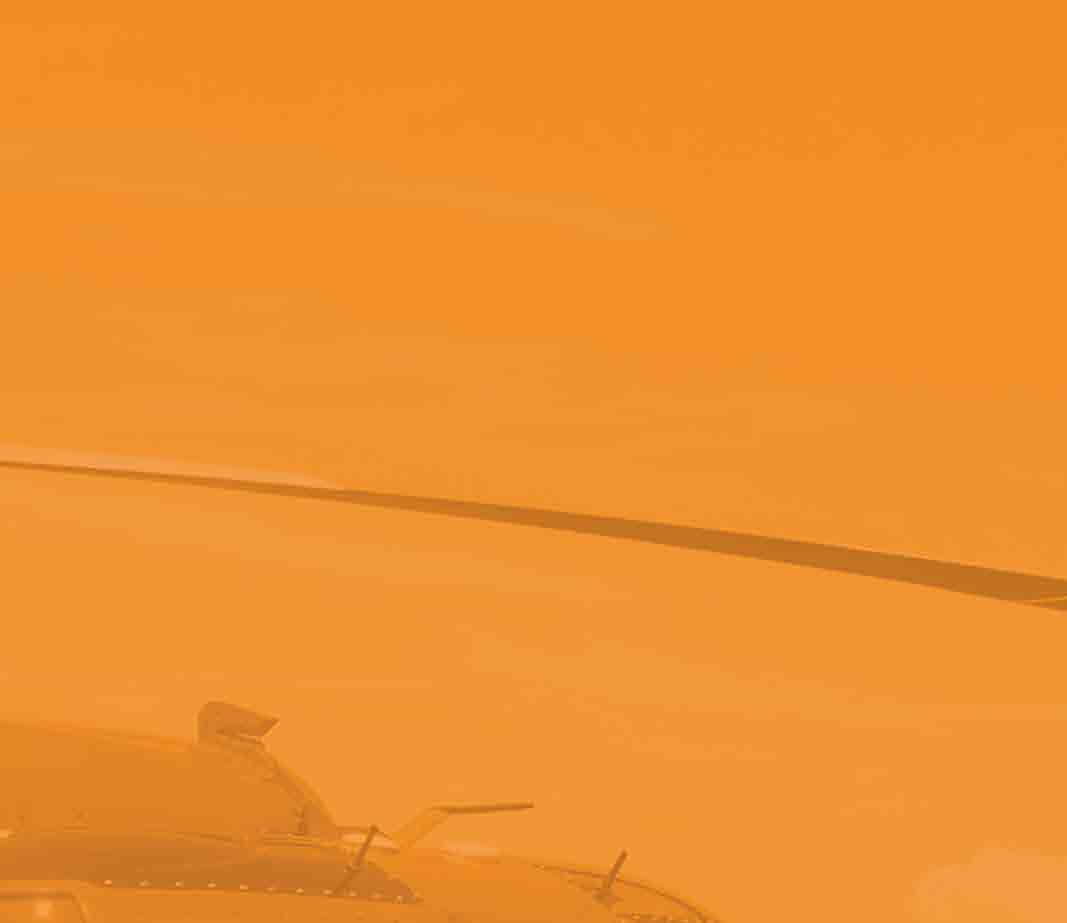


























Many things in life come with a warranty but if you don’t read the warranty terms, conditions, or understand them, one can be disappointed and infuriated. Hopefully the Ag engine warranty that is provided by Pratt and Whitney Canada is clear to you. Let’s look to make sure and that you are getting the most out of the warranty provided to you.
The basic warranty. Pratt & Whitney Canada has a two-part warranty coverage in their enhanced warranty for Ag engines. Just for information, military use engines have a different warranty. For older Ag engines, the warranty period is the first 1000 engine operating hours from the date of engine shipment. For newer Ag engines, based upon serial number, the warranty period is 2500 operating hours or 5 years, whichever occurs first. After 5 years, if TTSN is below 1,000 hours, basic warranty will still apply up to 1,000 hours. P&WC warrants that the new engine will be free from defect in material and/ or manufacturing workmanship. The warranty defines defect to mean breakage or failure of a part as determined by P&WC caused by material defect or manufacturing workmanship. You need to check the warranty coverage information to find out what coverage you have and other exclusions.
Alongside this basic warranty exists some additional warranties provided to you. The Primary Parts Service Policy
or PPSP and the Extended Engine Service Policy or EESP. The PPSP provides support for a specific group of parts. This coverage extends beyond the 2500 warranty sometimes to TBO or even to 5000 hours. The group of parts is listed in the warranty documentation. This is a pro-rated coverage and the list includes a formula for determining the amount of coverage available. If during the process the primary part affected is repaired, it will continue its class life. If the part is replaced with a new one then primary part warranty starts over at zero. This has the potential to be a huge benefit that not many people are aware of.
The EESP or Extended Engine Service Policy was brought about in the case of an engine suffering extensive damage from a warrantable, chargeable event. The P&WC warranty administrator may determine that a premature overhaul is required. If this happens you may be provided with a LCO or Limited Cost Overhaul. The other thing that could happen is a like value engine exchange. This coverage is again based upon hours and cycles consumed. Items like engine age, environmental, operational, and maintenance conditions may also be viewed to determine coverage. We have had several engines that have fallen into this coverage. You might be surprised at the level of support P&WC can provide. ➤

Let’s face it. This job’s not for everyone. Aerial firefighting demands nerves of steel and the power to fly at peak performance. The PT6 turboprop continues to be the engine of choice — built for full-load takeoffs in extreme hot and high environments, all day, every day.
LEARN MORE AT PWC.CA/PT6

P&WC also provides Commercial Support Programs Notices or CSPN’s for some events. There are program notices for a variety of parts, for example, inspection of some fuel nozzle tips and for the replacement of some gear sets in the reduction gearbox. There are a wide variety of items that have been identified as requiring commercial support. P&WC has also provided coverage for the power turbine blade replacement at 5000 hours on the PT6A-67AG through a CSPN. If you are unaware of this coverage the blades can be replaced at 50% off list through commercial support coverage. Questions about commercial support?

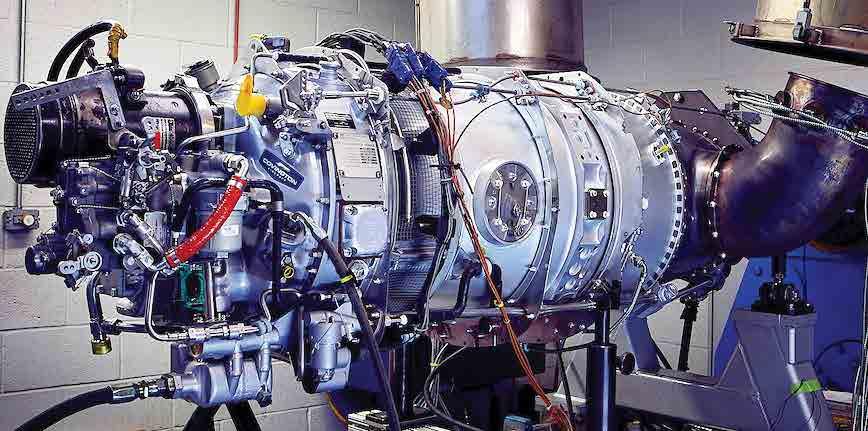
Time to ask them.
Now, let’s review what is not covered. As with every warranty there are some things that fall into this category. Routine line maintenance and adjustment costs are not
covered including other standard maintenance items. Engine overhaul or major refurbishment costs are not covered. Hot section inspections and refurbishment costs associated with hot section inspections are not covered. This doesn’t mean that if a part in a hot section prematurely needs repair it isn’t covered. More times than I can count P&WC has covered components in a hot section by either covering repair costs or replacing them. Items like seal rings or segments are not typically covered, their replacement is typically as a refurbishment to reestablish proper sealing or clearances. This also falls into the category of normal wear, tear and deterioration. P&WC also reserves the right to exclude warranty coverage, if other than original or authorized parts are used. Parts used in your engine must have traceability or certification, including filters. If parts have been involved in a previous accident or are not repaired in accordance with P&WC approved process it can also lead to exclusion. There are another group of factors that are beyond P&WC’s control listed in the literature and I strongly recommend reviewing those. If you need a copy of the warranty program contact your field service manager or we can help.
Your responsibilities are simple. Operate and maintain your engine in accordance with written instructions including the maintenance manuals and service bulletins. For instance, document the results of your borescopes when you do your fuel nozzle maintenance. P&WC has asked me for this data when asking for warranty consideration on a hot section project before. This brings me to my next point. Keep adequate maintenance records. You may be requested to provide this data to the warranty administrator. Claims must be made within 30 days of discovery and claims must be submitted within 180 days. Claims must include the defective part and must be made through a designated facility or distributor. This is where repair or replacement parts must be procured from. If you have a warranty issue please contact your Pratt & Whitney Canada Field Service Manager. That is the place to begin. Make sure and send the engine for repair to an authorized facility, such as Covington Aircraft. For more help feel free to reach out and I can help you through the process.
Robert Craymer has worked on PT6A engine and PT6A powered aircraft for the past three decades, including the last 25+ years at Covington Aircraft. As a licensed A&P mechanic, Robert has held every job in an engine overhaul shop as well as being an instructor of PT6A Maintenance and Familiarization courses for both pilots and mechanics. Robert has been elected to the NAAA board as the AlliedPropulsion Board Member. Robert can be reached at robertc@covingtonaircraft.com or 662-910-9899. Visit us at covingtonaircraft.com.





Daher delivered a turboprop-powered Kodiak 100 to the North Carolina Forest Service’s Aviation Division announced on July 17th, 2023, North Carolina Forest Service’s Aviation Division becomes a new customer for Daher, as well as the first operator of the Kodiak 100 multi-mission aircraft equipped with a composite five-blade propeller.
The North Carolina Forest Service will utilize its Kodiak 100 as a “load aircraft," which carries equipment and supplies to operational locations supporting aerial tankers in the wildfire suppression role.

This is Daher’s first new-production Kodiak 100 to be delivered with the composite five-blade propeller configuration from Hartzell Propeller, enhancing the aircraft’s performance and further improving its sustainability.
“As North Carolina’s motto is: ‘First in Flight,’ it’s extremely appropriate that the state’s Forest Service is the initial operator of this latest upgrade for the Kodiak 100,” stated Nicolas Chabbert, the Senior Vice President of Daher’s Aircraft Division.
Tailored specifically for use on the Kodiak 100, the new five-blade propeller incorporates Hartzell’s lightweight Raptor propeller hub technology. The entire unit weighs 13 lbs. less than the Kodiak 100’s current four-blade metal propeller and reduces the aircraft’s takeoff roll by six percent at maximum gross weight. The propeller is durable by design, with a TBO (time between overhaul) of 4,000 hours/six years and an industry-leading warranty of six years or up to 4,000 hours.
New-production Kodiak 100 Series III aircraft are now available with the five-blade composite propeller as an option. The Hartzell Top Prop program offers retrofit for all in-service Kodiak 100s.
“We welcome the Kodiak 100 to the family of aircraft equipped with our five-blade composite propeller, joining Daher’s Kodiak 900 and the TBM 960,” said Hartzell President JJ Frigge. “Hartzell has produced composite blades since 1978, made with a structural carbon fiber that offers superior strength, damage resistance, and reparability.”
Key features of Hartzell’s composite propeller blades include a durable nickel-cobalt leading edge, a nickel erosion screen for FOD (foreign object damage) protection, urethane paint for improved erosion protection, and the use of aerospacegrade carbon fiber.
The Kodiak 100’s new propeller is 6.6 dB quieter, turning at 2,000 rpm for maximum torque – which is 200 rpm slower than the current four-blade metal propeller. This slower rotation speed also reduces vibration aboard the aircraft and lowers the Kodiak 100’s flyover noise below the European EASA airworthiness authority’s stringent 78 dB(A) requirement.
At a diameter of 96 inches, the five-blade composite propeller has a ground clearance of 16.4 inches, retaining the Kodiak 100’s ability to operate from unprepared strips and in the amphibious version when equipped with floats.
Daher’s Kodiak 100 is a multi-mission workhorse, operated worldwide in applications ranging from wildfire suppression, monitoring national resources, and protecting public safety to humanitarian services and ISR (intelligence, surveillance, and reconnaissance) duties. Of the 320-plus Kodiak 100s delivered to date, more than 90 are in service with multimission operators, logging an estimated 28,500 flight hours annually for this fleet segment.
“With its enormous useful load, off-airport capabilities, and simple and rugged design, the Kodiak 100 is ideal for such a broad range of applications,” said Paul Carelli, the Director of Kodiak Flight Operations and Special Missions. “In addition to the performance improvement with Hartzell’s five-blade composite propeller, the aircraft is extremely quiet. This is significant for missions such as forestry and law enforcement, and also is very important when flying recreationally in backcountry environments.”





Bridger Aerospace announced on July 24, 2023, that it has entered into a definitive purchase agreement with Bighorn Airways, a specialty aviation company based in Sheridan, WY. Bridger will acquire Bighorn’s fleet of 12 aircraft used for wildfire smoke jumping and special mission transport and delivery for government customers. The transaction, valued at $39 million, is expected to close by the end of September 2023 and is subject to normal and customary closing conditions. The acquisition will be financed through a combination of cash and stock, with the majority of consideration paid to the sellers in the form of stock.

“The addition of Bighorn’s assets to the Bridger Aerospace family expands our aerial firefighting services to new mission-critical areas,” commented Tim Sheehy, Bridger Aerospace’s Chief Executive Officer. “Bighorn provides year-round logistics for the Department of Defense (DoD), which broadens Bridger’s annual recurring revenue profile.
From providing aircraft and flight crews in support of the U.S. government’s smoke jumper program to flying missions in the North Pole region of Alaska, Bighorn adds unique skills, equipment, and personnel to what is now the largest specialty wildfire aviation fleet in the country. We are honored to welcome Bighorn to the Bridger family.”
Bighorn’s fleet of 12 aircraft includes three Bombardier Dash 8 featuring a 7500 lbs. payload capacity, a range of 1200 miles, and the capability of low-level flights for para cargo operations. Bighorn also operates four Casa 212-200 and five Dornier 228-100 twin turboprop aircraft capable of short takeoff and landing. Bighorn is one of only a few air carriers approved by the DoD Commercial Airlift Review Board (CARB), holds a DoD Facility Security Clearance, and is a U.S. Special Operations Command (SOCOM) certified air carrier. Bighorn also owns and operates the Sheridan, WY Fixed Base Operation (FBO).



Perimeter Solutions welcomed Washington Public Lands Commissioner Hilary Franz to tour its manufacturing facility in Pasco, Washington, on June 29, 2023.

Perimeter Solutions opened its Pasco facility in July of 2021. The company’s flagship long-term fire retardants, PHOSCHEK® LCE20-Fx and PHOS-CHEK LCE20W, are produced at the site. PHOS-CHEK LCE20-Fx is an innovative, phosphate-based product that uses an environmentally friendlier formula to offer superior performance, product safety, and enhanced stability for aerial wildland firefighting. PHOS-CHEK LCE20W is an uncolored, ground-applied long-term fire retardant that can be sprayed ahead of wildfire season or during an oncoming fire threat to protect vegetation and other fuel sources.
Franz has served as Commissioner of Public Lands since 2017. In the Commissioner’s role, she leads the state’s wildfire fighting force, managing nearly six million acres of public lands. Since becoming Commissioner, she has led efforts to protect Washington communities and the environment from the impacts of wildfire. She has worked with her team to transform the state into a modern wildland firefighting force. Franz also was instrumental in the passing of House Bill 1168. The Wildfire, Forest Health Funding Bill committed $500 million to boost the state’s wildfire
response, accelerate forest restoration, and build community resilience.
"Perimeter Solutions is an invaluable partner in our wildland firefighting efforts, providing crucial products like fire retardant and foams that play a vital role in our toolbox,” said Franz. “It's not just about extinguishing flames; it's about keeping our firefighters, the public, and the environment safe. We're committed to continuing our collaboration with Perimeter Solutions and always strive for improvement and innovation. Together, we can educate others about the importance of what Perimeter Solutions does here in Pasco and worldwide and how it truly makes a difference in wildfire fighting."
The PHOS-CHEK LCE20-Fx fire retardant produced at the Pasco site is shipped to air attack bases around the US and Canada to help fire management agencies, including the USDA Forest Service, prevent wildfire spread. The Company is celebrating the 60th anniversary of PHOS-CHEK fire retardant this year. It was in 1963 that the iconic brand was first approved for use in aerial wildfire attack by the Forest Service, and it quickly became the go-to fire retardant for wildland firefighters worldwide. Over the past six decades, PHOS-CHEK has helped firefighters to protect property and save countless lives.
Working with global fire safety agencies and alongside frontline firefighters we’re always looking to make our aerial fire retardants better. More effective. Safer. Easier deployment. Higher visibility. Hassle-free mixing and storage.
In the critical area of environmental performance, our PHOS-CHEK LCE20-Fx fire retardant represents a next generation technology –featuring lower aquatic toxicity, low impact on vegetation and high efficiency in use. Beyond taking care of our natural environment, that makes PHOS-CHEK LCE20-Fx safer to use, easier to handle and reduces disposal costs.


Let us know how we can help you with better products and services. We’re listening.
• USDA Forest Service certified
• 100% premium-grade phosphate product
• Superior aerial visibility
• Low environmental footprint


• Improved aquatic toxicity
• Improved product stability
• Easier handling
• Reduced maintenance costs
• Enhanced product safety
Black Widow Helicopters announced June 19th, 2023, the successful delivery of a Sikorsky UH-60A+ Black Hawk helicopter to Trans Aero Ltd.
“We are very pleased with the quality of work produced and the professionalism shown by Black Widow Helicopters on such a significant modernization project”, said Kevin Shields, President of Trans Aero Ltd. “Adding a second Black Hawk to our fleet is a significant event for us.”
The success of the UH-60 Black Hawk helicopter to attack and suppress wildfires in their initial stage has spurred operators globally to evaluate this unique asset, both as a firefighting tool and a multi-mission aircraft for year-round utility and firefighting missions.
“We are very pleased we could deliver this UH-60A+ Black Hawk to a legacy operator such as Trans Aero. Our ability to modernize U.S. Army BEST Program UH-60 Black Hawk aircraft to local and international customers is an excellent way for clients to quickly acquire a helicopter platform renowned for its reliability, high performance and multi-role
versatility,” said Alex Freidin, Vice President for the UH-60 Black Hawk Program at Black Widow Helicopters.
“The delivery to Trans Aero of this exceptional and unique UH-60 Black Hawk product highlights the fact that we are witnessing the growth of a new generation of state-of-the-art modernized Black Hawk legacy helicopters ready to serve world markets", Friedin continued.
The aircraft will be the second UH-60 Black Hawk in Trans Aero’s fleet which will support firefighting and utility operations.
“The UH-60 is proving to be a tremendous all-in-one aerial firefighting weapon, and this capability brings unmatched multi-mission capability to our fleet and to ultimately protect lives and property”, Shields continued.
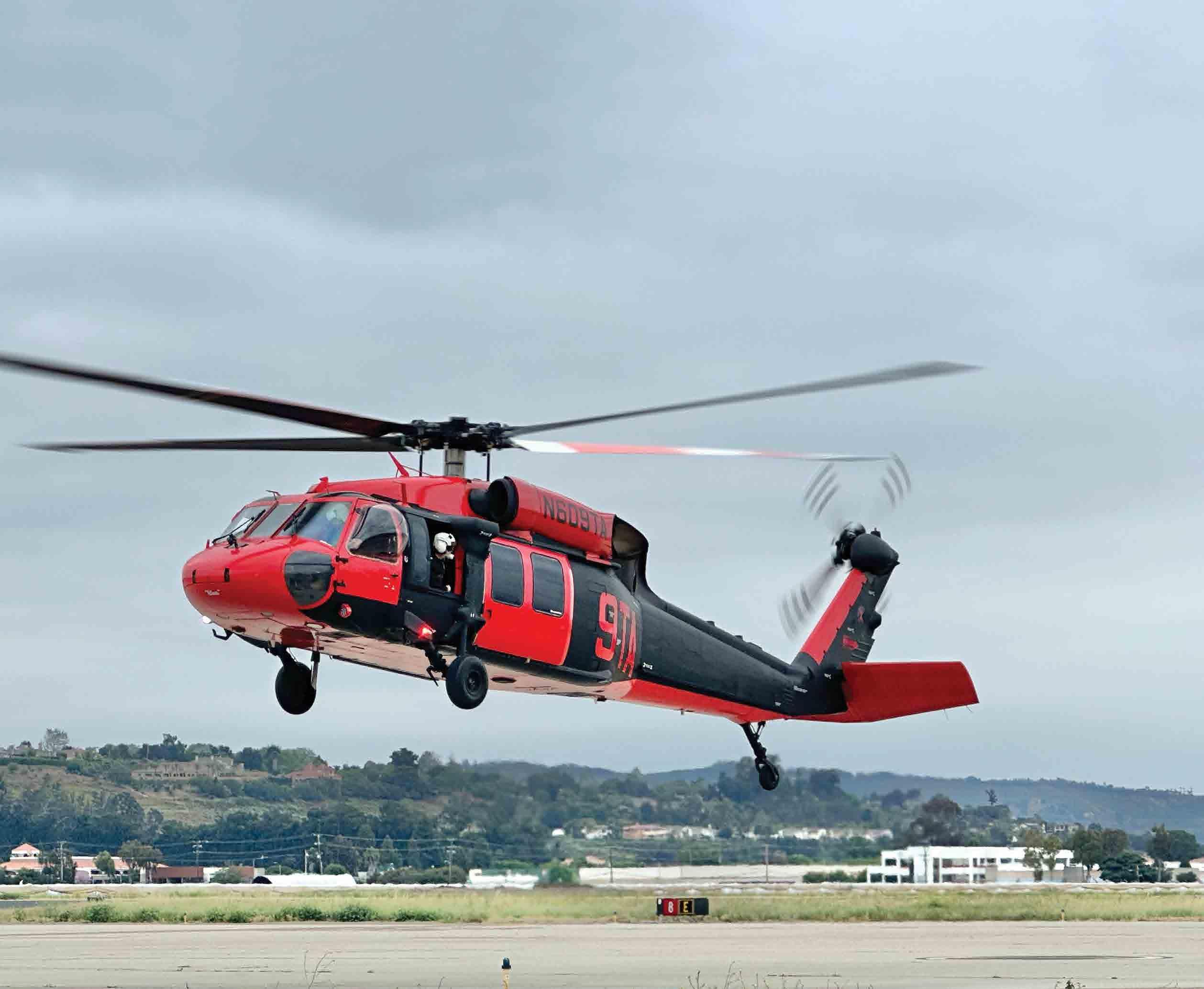
In business for over 60 years, Trans Aero Ltd. is a Coloradobased helicopter operator. Its main focuses are in the fields of aeromedical, wildland firefighting, government contracts, and utility operations.


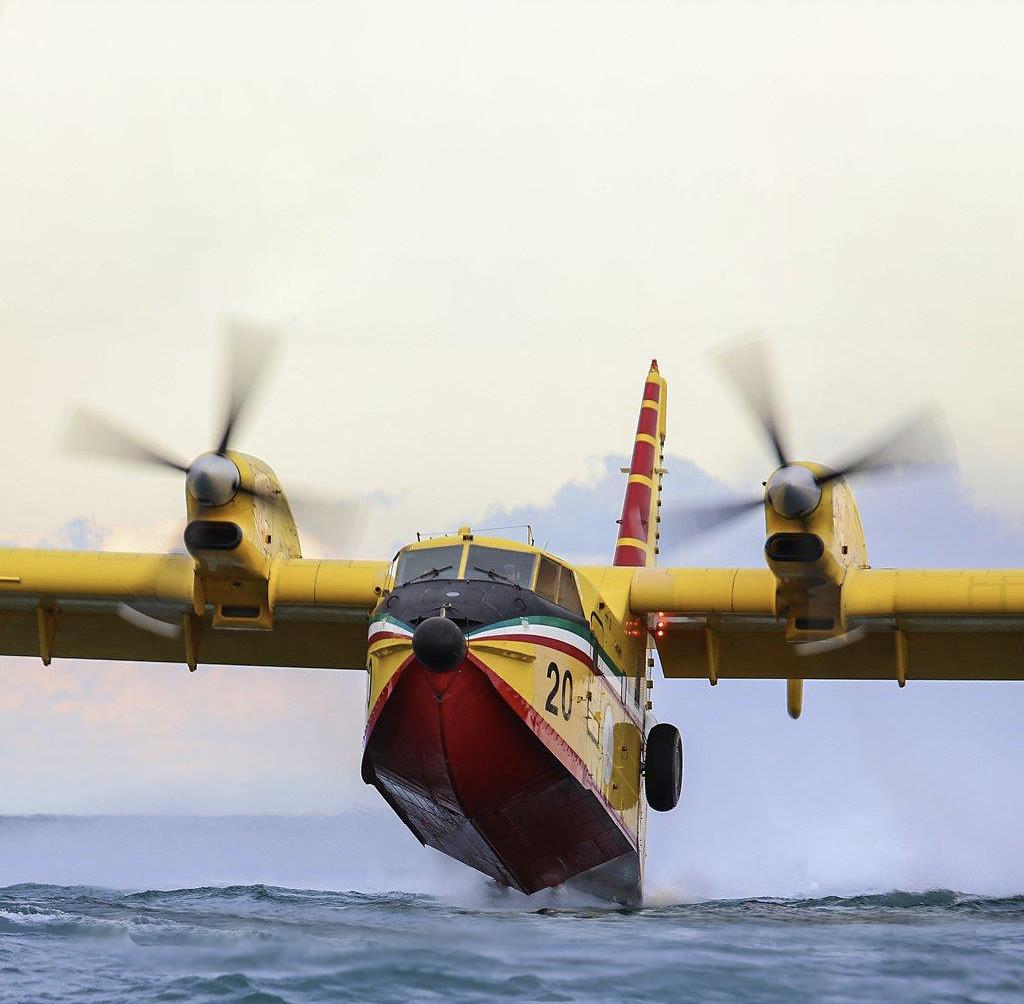
CAL FIRE is bolstering its firefighting aircraft fleet across California for the second year in a row as a result of over $72 million in funding provided by the administration of Governor Gavin Newsom. The investment has allowed CAL FIRE to secure 24 additional firefighting aircraft (19 helicopters and 5 airplanes for a contractual period of 90-120 days) to enhance their statewide response efforts against wildfires in California. The additional fixed-wing aircraft include 3 large airtankers specifically designed to carry up to 4,000 gallons of retardant. These aircraft have been strategically located in communities across California and will be pre-positioned to meet the needs of potential fire activity throughout the state.
"The deployment of more aircraft dedicated to the people of California marks a historic milestone, with the highest number of firefighting aircraft ever available for initial attack in the state for the second consecutive year," stated Director and Fire Chief Joe Tyler. Chief Tyler further explained that "the significant rainfall California experienced this winter has led to a substantial increase of highly flammable fuels, which contribute to the rapid escalation of fires." Last week alone, CAL FIRE responded to over 300 wildfires as temperatures continued to increase across the state.
Aircraft are initially prepositioned in the following Counties: Butte, Tuolumne, San Diego, Tulare, Humboldt, Mariposa, Nevada, Siskiyou, Sacramento, Fresno, Shasta, San Luis Obispo, Napa, Placer, Lassen, Riverside, and Sonoma Counties.

Established in 1970, CAL FIRE's aviation program has grown to over 60 fixed-wing and rotary-wing aircraft, making it the largest civil aerial firefighting fleet worldwide. This renowned aviation program responds to thousands of wildfires dropping water and fire retardant in California each year.
In light of these efforts, CAL FIRE urges the public to refrain from operating drones over areas with fire activity. It is important to note that flying drones in these areas is strictly prohibited by law. Drone operation hampers aerial firefighting capabilities and poses significant risks to lives, property, and natural resources.
CAL FIRE remains dedicated to the protection of California's communities and natural landscapes, and these additional firefighting aircraft represent a significant step towards enhancing the state's wildfire response capabilities.

The Federal Aviation Administration (FAA) has issued an Airworthiness Directive regarding Air Tractor AT-802 and AT-802A aircraft equipped with Wipaire, Inc. Wipline 10000 Amphibian Floats, as detailed in Supplemental Type Certificate (STC) # SA01795CH. This directive also covers previously float-equipped planes that have been converted back to landplane configuration under the same STC.

A routine maintenance inspection on an Air Tractor Model AT-802 aircraft unveiled a hairline crack in the flange of the right forward horizontal stabilizer spar. This particular airplane was fitted with the aforementioned STC and is employed in fire-fighting operations, which can accelerate the propagation of crack growth. Among the 144 Air Tractor Model AT-802 and AT-802A airplanes featuring this STC, 45 have undergone inspections, with 24 of them revealing cracks in at least one forward horizontal stabilizer spar. The cracks are situated within the bend radius of the forward horizontal stabilizer spar, precisely at the STC finlet mounting positions.
This AD, effective from August 9, 2023, mandates the inspection of both forward horizontal stabilizer spars for
cracks, the replacement of any cracked ones, and the submission of inspection findings to the FAA. Wipaire, Inc. Service Letter 253, Revision B, dated July 27, 2023, outlines the inspection procedures and compliance timelines. Depending on the installed STC configuration, compliance must be observed within a window of 3 to 15 days or 24 hours of time-in-service (TIS), whichever comes later. Subsequent inspections are required every 200 hours TIS.
The immediate implementation of this AD by the FAA stems from the potential risk of structural failure in the forward horizontal stabilizer spars, which could result in a loss of control over the aircraft's horizontal tail. The airplanes equipped with the specified STC are utilized for fire-fighting tasks, subjecting them to frequent high-repetitive fatigue loads in this specific region due to their high utilization rate. You can access the full AD document here.
https://www.federalregister.gov/ documents/2023/08/09/2023-16964/airworthinessdirectives-air-tractor-inc-airplanes


2,650 GALLONS
10,031 LITERS
For over three decades, Erickson has been a leader in providing superior aerial firefighting solutions to communities worldwide. The S-64 Air Crane® helicopter, equipped with state-of-the-art fire suppression systems, can tackle the world’s most challenging wildfires.
To learn more, visit: PR.ERICKSONINC.COM/AFF-SEPT-OCT

GPMS International announced June 24th, 2023, that Precision Helicopters, a leading utility operator based in McMinnville, Oregon, has chosen to equip their Airbus AS332 fleet with the industry’s leading health and usage monitoring system (HUMS), Foresight MX.
“As one of our first Certified Installers, Precision’s 145 Repair Station has been a great friend to us since our founding,” said Ronnie Ries, Vice President of Marketing at GPMS. “They’ve assisted us with customer installations, troubleshooting, and feedback on how we can continue to improve our solutions and support for utility operators. We’re proud to partner with them to deliver the STC to the AS332 platform and bring our predictive Foresight MX all-in-one HUMS, RTB, FDM and Engine Monitoring solution to these operators.”
Today, 80% of AS332 helicopters are being operated by military/government and offshore operators. As these operators are divesting of AS332s, many of them are finding new lives in the utility and firefighting market where they’re

uniquely differentiated as standard category in a field of restricted category helicopters. This allows operators like Precision to bring additional utility to disaster operations, as they can carry passengers in addition to cargo or external loads.
“While there are other HUMS providers, there’s no question we made the right decision in selecting Foresight MX for our aircraft,” said David Rath, Group CEO of the Precision family of companies. “The advanced technology, ease of use, and customer support provided by GPMS is second to none. We can’t wait to demonstrate the system to other AS332 operators and assist them with their installations.”
Ries continues, “New contracts like the USFS MATOC are requiring enhanced safety practices and technologies like HUMS. With Foresight MX, Precision is ahead of many of their competitors and is ready to meet these requirements from day one. We’re honored to be part of Precision’s fleet as they support customers worldwide.”






The C-27J Fire Fighter with roll-on/roll-off second generation Modular Airborne Fire Fighting System (MAFFS II) by UAC, the world leader of advanced aerial application systems, represents the market leading edge. The Fire Fighter version enhances the multi-mission capabilities of the C-27J, with significantly lower acquisition and operating cost than a dedicated platform. The flexible aircraft allows rapid reconfiguration for transport, humanitarian support, civil protection and SAR roles.
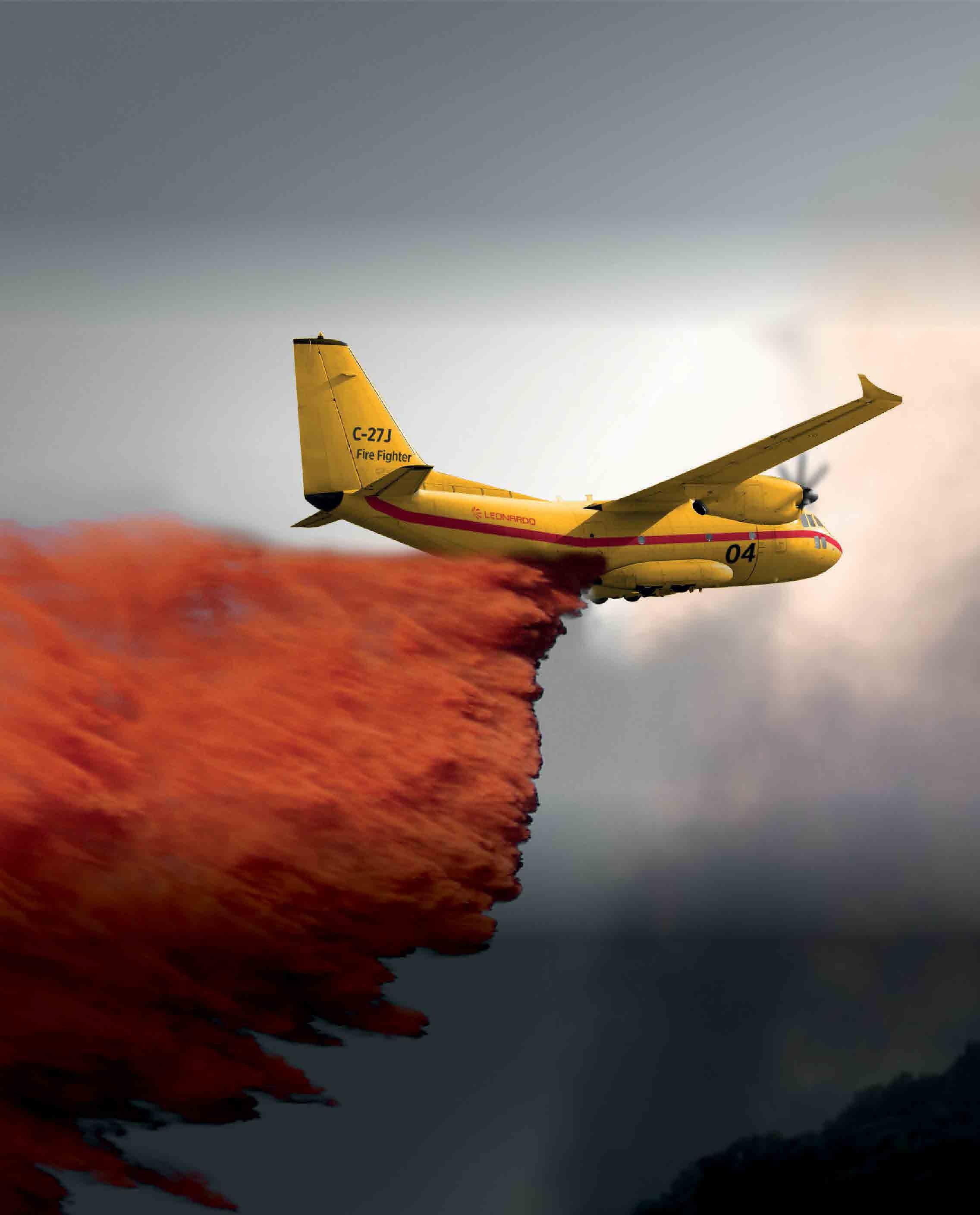
 by Igor Bozinovski
by Igor Bozinovski
The second Air Tractor AT-802 single-engine firefighting aircraft intended for the Slovenian Ministry of Defence arrived on May 18, 2023.

The twin-seat aircraft in a land-based configuration (with classical, tailwheel-type landing gear) arrived in Slovenia with Spanish temporary registration EC-OCO (ex N7900R, c/n 802-1029) with a one-stop flight that began on the same morning at Viver airport in Spain and proceeded towards Slovenia with a single stop at Calvi/Sainte-Catherine airport on Corsica, France.
The 45-minute-long acceptance test flight for the EC-OCO was done on June 20 with an Air Tractor Europe (ATE) pilot in command and a Slovenian copilot in the back seat. Once in the Slovenian register, this aircraft will be registered as S5-BZT.
The 4-strong fleet would be complete in March 2024 when two amphibian-configured single-seat AT-802A Fire Boss planes arrive in Slovenia. Meanwhile, the twin-seat planes will return to Spain, where they will install floats before the end of October 2023, changing their designation from AT802 to AT-802 Fire Boss.
“Following the devastating Karst wildfire of July 2022, Slovenia committed to promptly build a dedicated aerial firefighting fleet that would rely on four brand-new 3,104-liter (800 US Gallon) capacity Air Tractor AT-802 Fire Boss planes,” Slovenian defense minister Marjan Šarec said on April 17 in Ljubljana during the ceremony for signing the Agreement for the acquisition of 4 Air Tractor planes from the Spanish, Viver-based company Air Tractor Europe (ATE). ➤
Slovenia has begun to receive its initial order of 4 Air Tractor aircraft. Photo by Air Tractor Europe
The aircraft purchased by the MoD would operate under civilian (S5-) registration within a special aerial firefighting unit established within URSZR. To put the unit in operational use, training of Slovenian pilots and related technical personnel would be organized by ATE, which will help Slovenia put its Air Tractors in use in the summer of 2023. While various airports across Slovenia will be used as a temporary base, the unit’s home base is yet to be decided.
Slovenia’s program for establishing aerial firefighting capabilities was approved at a government session held in Ljubljana on January 30, 2023. A new dedicated national development project was launched to enable Slovenia to establish sovereign aerial firefighting capability between 2023-2026. The fleet will comprise a maximum of six firefighting aircraft, with four firm orders and two options.
Being co-financed (85%) by the European cohesion policy funds for the period 2021-2027, the Slovenian project now focuses on the initial acquisition of the initial four aircraft and establishing an OEM-backed training and logistics program that will allow URSZR planes to become part of the common aerial firefighting fleet of the EU Civil Protection Mechanism (rescEU) that apart from protecting Slovenia,
will also help extinguish wildfires within the EU and other nations in need.
If the option for acquiring two more aircraft is implemented, Slovenia will further increase its Air Tractor fleet during or after 2025.


Over 1,000 Air Tractor AT-802 aircraft have been built since 1992, and this aircraft is now a firefighting standard for most wildfires-prone countries. The Air Tractor AT-802 is currently in service with governments and private operators in the United States, Canada, Australia, South Africa, Chile, Argentina, Brazil, Spain, Portugal, France, Italy, Sweden, Israel, Cyprus, Croatia, Montenegro, Macedonia, Greece, Turkey, and Saudi Arabia.
According to ATE, serious interest in purchasing the AT-802 plane has so far also been demonstrated by Albania and Bosnia-Herzegovina. Aside from selling planes, ATE is also very active in leasing AT-802s and providing aerial firefighting services to various governments in Europe and beyond, with a record 50 ATE-owned/controlled AT-802 planes expected to operate this year in Spain, Portugal, Turkey, Greece, Germany, France, Cyprus, and Saudi Arabia.



SiNAB, an SME technology integrator based in Taren Point, NSW has been awarded a $215,000 grant under The Bushfire Commercialization Fund (BCF), a NSW Government program aimed at accelerating the development and adoption of cutting-edge bushfire technologies. The grant will support the further testing and commercialization of the SiNAB Phoenix Pod, a revolutionary device designed to provide Intelligence, Surveillance, and Reconnaissance (ISR) capabilities during bushfire emergencies.
The SiNAB Phoenix Pod is a fully integrated, self-contained imaging sensor and rapid air-to-ground communication system that can be attached to various aircraft. It offers live video and data transfer capabilities to anyone involved in the fire response chain, including firefighters, ground stations, and command centers. With up to five camera sensors, including electro-optic, medium wave infrared, shortwave infrared, and telescopic variants, the Phoenix Pod provides real-time intelligence in visual and infrared/heat spectrums.

"This means that flying 16km away from a fire, our Pod and ISR solution can provide high-definition footage over a wide area that is sent back to those decision makers in the control center and potentially save many lives," said Tony Landers, CEO of SiNAB.
Key benefits of the Phoenix Pod in firefighting operations include:
• Wide-area detection of hotspots for early prevention and intervention
• Identification of high fire risk areas for better preparedness
• Rapid fire mapping, enabling efficient tracking and coordinated firefighting efforts
• Ability to see through smoke, ensuring clear visibility even in adverse conditions
The Pod employs a range of radio transmitters to send data in real time, allowing seamless communication between the sensor and ground-based players. The userfriendly mission software, ATAK (Android Team Awareness Kit), facilitates mission coordination, logistics, and mapping, providing firefighters and command centers with vital situational awareness.
"This grant from the NSW Government's Bushfire Commercialisation Fund is a significant milestone for us,"
said Landers. "With this support, we aim to enhance the technical readiness level of the Phoenix Pod and establish it as a valuable asset for NSW firefighters. Our solution offers state-of-the-art technology, improved situational awareness, and better communication between aircraft and fire crews, ultimately leading to more effective firefighting efforts."
SiNAB's Phoenix Pod is a modular and fully selfcontained system, allowing easy attachment to a wide range of aircraft with standard 14-inch pylons. It operates independently with its onboard power supply and can be upgraded to accommodate future advancements in technology.
The benefits of the Phoenix Pod extend beyond firefighting, positioning NSW as a producer of advanced technologies for emergency services. Search and rescue, coastal surveillance, flood mapping, and disaster management operators can all benefit from this technology. By investing in this innovative solution, the state promotes environmental preservation through early prevention and intervention, boosts employment opportunities, and strengthens the local supply chain.
The grant will be utilized to further develop and test the Phoenix Pod, increasing its technical readiness to deploy in the case of a bushfire emergency.


Arcadea Group, a growth-oriented, long-hold investor in vertical SaaS businesses, announced in June the strategic merger of Air Maestro and Spidertracks.
Air Maestro, a leading SaaS provider of critical safety management systems, flight operations, and training solutions, has been supporting aviation operators since 2005. Its comprehensive Operational and Safety Management System is trusted by the globe's most dynamic aviation operators.
Spidertracks empowers the aviation industry with realtime aircraft management and proactive safety decisions. Committed to enhancing aviation safety, Spidertracks assists thousands of aviators worldwide to ensure their teams return home safely every day.
This decision marks a significant milestone in the journey of these two businesses, uniting their already complimentary efforts towards a common goal and addressing critical, unserved needs in the global aviation industry. The merger amplifies the strengths of the two businesses, creating a unified front in enhancing safety and operational efficiency in the aviation industry. The merged businesses will deliver a unified software platform that leverages the strengths of each company's offerings and expands the suite of services available to customers, while allowing for a rapidly accelerated, shared product roadmap that will deliver unparalleled value to the market.
As part of the merger, Aleks Banas, CEO of Air Maestro, will take over the CEO role of the combined business, with Steve Whitaker, Spidertracks’ CPO and COO, transitioning to COO.

Aleks remarked, “the Aviation industry is poorly served by a fragmented collection of sub-scale, legacy businesses. Most at some degree of scale are owned by short-term-oriented, financially focused private equity or venture capital firms that have no long-term vision for or staying power in this market. By combining Air Maestro and Spidertracks, we will immediately be one of the largest global players in the space, offering the most comprehensive and capable suite of solutions to the commercial aviation market.”
Paul Yancich, co-founder and Managing Director of Arcadea group, went on to say, “Air Maestro and Spidertracks
have long been solving different elements of the same fundamental challenge within aviation: how to operate a profitable, successful flight organization without ever sacrificing quality, safety, or efficiency. This is a monumental challenge, and, until this merger, no single business could come close to serving customers’ entire needs.”
Steve Whitaker, COO, added, “We’ve heard clearly from the market that they want fewer vendors with expanded capabilities and more modern technology. Our newly formed business will be the only vendor in the world that can truly provide an end-to-end safety, operations, tracking, FDM, FOQA, and fleet management solution. And while we’re thrilled at our current combined capabilities, we will be investing materially to bring far more functionality to market in the near-term.”
Arcadea Group is excited to shepherd this new growth phase for Air Maestro and Spidertracks. The firm is confident that the resulting synergies will lead to improved products and services for customers, a safer and more efficient aviation community, and a stronger competitive advantage in the marketplace.


On July 20th, 2023, for the first time, a Dash 8-400 airtanker departed Canada for Europe to support Sécurité Civile in France on an operational contract for the summer, assisting firefighters in the country. Negotiations for the agreement began in January 2023 with Conair Group Inc. as France prepared for their summer firefighting operations in response to the devastating fire season in 2022 when more than 65,000 hectares burned.
“France has been exemplary in their proactive response to the consequences of last year’s wildfires that ravaged parts of the country” shared Matt Bradley, President and CEO of Conair Group Inc. “France anticipated similar wildfire challenges in future years and acted quickly, enhancing their fleet and strengthening their air resources. This spring, France accepted the 8th multi-role Dash 8-400MRE airtanker into their own fleet, built by Conair, plus contracted a Dash 8-400AT airtanker from Conair’s fleet, reinforcing their capability. We are proud to support France, continuing to grow our 40-year partnership.”
Conair has been providing France with airtankers since the 1980s. The country has since built a strong national fleet including 12 Canadair waterbombers and eight Dash 8-400 multi role airtankers, using both retardant and water to attack fires, with retardant slowing flames and water cooling flames. The Dash 8-400 airtanker works in concert with waterbombers by delivering long retardant lines around the perimeter of a fire to reduce its spread, offering firefighters support to help keep wildfires small. The multi role Dash 8-400MRE airtankers are versatile, with the ability to respond to a variety of national crises, converting quickly between airtanker, passenger, cargo and medevac roles.
Support between Canada and France is reciprocal. As Canada is sending an airtanker to support the French fleet this summer, France, at the request of the Canadian government, sent more than 100 firefighters and emergency response personnel to Quebec to assist with wildfires challenging the province in June.
Conair Group Inc also announced in August the purchase of seven Dash 8- 400 aircraft for conversion to airtankers, engineered specifically for aerial firefighting.
“Countries are facing escalating wildfire behaviour. And many are challenged by limited aerial firefighting resources or aging fleets in need of modernization to ensure the
firetruck in the sky is ready to dispatch when the call comes,” shares Matt Bradley, President and CEO of Conair. “Supply of modern, large airtankers is limited. Our purchase gives us the ability to support countries as they adapt to the changing wildfire environment, continuing to protect their citizens and resources using air assets.”
Eleven Dash 8-400 aircraft were purchased by Conair in 2021 to replace the company’s aging fleet of airtankers, in addition to growing the fleet for new markets. In 2023 Conair has on contract four Dash 8-400 airtankers in British Columbia, two in Alaska, one in Australia and one in France. Aero-Flite Inc., Conair’s US-based subsidiary company, has on contract two in Washington state. By the end of 2023, all aircraft from the initial 2021 purchase will be operating as airtankers, supporting government agencies on three continents.
“The purchase of seven additional aircraft for conversion offers countries an answer to the question of how to fight future wildfires. They can proactively build their response capacity for upcoming fire seasons by contracting the most modern airtanker available in the world today. Conair will convert these aircraft over the next two years, selling the airtankers direct to governments who own and operate their own fleet, or by providing long-term operational contracts through either Conair or Aero- Flite” shares Jeff Berry, Vice President of Business Development. “We are producing a new airtanker every 75 days from our facility in Canada, with the ability to expand.”
“Conair has been manufacturing the Dash 8-400 airtanker in British Columbia since 2005. The airtanker is made as either a multi role MRE or an airtanker-only variant, the AT,” adds Jeff Berry, Vice President of Business Development. “It is a modern large airtanker, fully certified by Transport Canada to the most stringent aerial firefighting regulations in the world, supporting safe operations. It is as fast as a jet to wildfires, operates exceedingly well in varied terrain, and takes off from shorter runways located closer to where fires occur, using mobile tanker bases.”
“As soon as an airtanker is completed, it goes into operation for a wildfire management agency around the world. We are currently filling manufacturing slots into 2024,” continues Berry. “Demand is growing globally. Every country is experiencing the same challenge, more frequent catastrophic wildfire seasons combined with strained air resources.”
For over 50 years Aero-Flite has partnered with agencies on forest fire missions across the US.

The Future of Aerial Firefighting: The Dash 8-400AT

Fast, fuel efficient and tactically flexible. Setting the standard for Next Generation aircraft with OEM support to keep the firefighter flying for decades.
aerofliteinc.com
 Photo: Alexandre Dubath
Photo: Alexandre Dubath
Coulson Aviation is one of five organizations that have been awarded a ten-year indefinite-delivery/indefinite-quantity
Large Airtanker (LAT) firefighting contract with the U.S. Forest Service (USFS). The total contract, valued at $7.2 billion, will provide the basis for operations and maintenance service for Coulson’s C-130H Hercules and Boeing 737 FireLiner™ aircraft.

“Coulson is honored to continue to provide our services in support of the U.S. Forest Service. Our crew members are incredibly skilled, efficient, and operate aircraft second to none,” said Britton Coulson, President and COO, Coulson Aviation. “We have over 60 years of experience with aerial support operations and look forward to being a part of the group selected by the USFS to aid fire suppression in the years ahead.”
Coulson Aviation currently operates the largest fleet of civilian Lockheed C-130H aircraft worldwide, is rapidly expanding its Boeing 737 Fleet, and is the first and only company in the world to convert a Boeing 737 commercial airliner into a FireLiner™ tanker. Each tanker receives over 40,000 technician hours to become fully compliant and operational. The FireLiner™ is differentiated from all other next generation LATs by its ability to transport firefighters without re-configuration and to fly at maximum speeds and altitudes with a load of retardant without restrictions.
The C-130H has been a leading attack aircraft in Coulson Aviation aerial firefighting missions due to its ability to employ makeshift runways for takeoffs and landings while offering a temporary infrastructure base onboard the aircraft.
In addition, Coulson Aviation announced July 13th. 2023 that the company was selected as the sole private helicopter operator for the fifth consecutive year to support Southern California’s Quick Reaction Force (QRF) to fight wildfires. Contracting with Los Angeles, Orange, and Ventura County fire departments with its fleet of Very Large Helitankers, pilots, and support crews, this new contract extends Coulson’s support of the QRF to 24/7/365, a first ever opportunity for the company and the counties and the only contract of its kind worldwide.
“Coulson Aviation is pleased to be part of this game-changing and successful force for California in response to the state’s year-round needs,” said Wayne Coulson, CEO of Coulson Aviation. “Our aircraft are on contract in the LA Basin, day and night, providing additional air support to the brave men and women firefighters protecting Southern California.”
This is the fifth year Coulson has supported the QRF, which launches around the clock efforts at the first sign of fire. This year the contract upgrades from two to three Boeing CH-47 Chinook Very Large Helitankers, a Sikorsky S-76
“Our goal to keep all new wildfires to 10 acres or less 95% of the time is not possible without the most state-of-the-art fleet of firefighting aircraft in the world,” Orange County Fire Authority Chief Brian Fennessy said of Coulson’s helicopters.


“That is exactly what the QRF is, and its year-round availability is a significant step in fighting what has become a year-round season of potentially deadly and destructive wildfires in Southern California and beyond.”



Coulson’s CH-47 Chinook Very Large Helitankers are equipped with Coulson’s own RADS-L delivery system, the largest fixed helicopter tank in the world at 3,000 gallons and can “hover fill” in 90 seconds. Coulson also designed and manufactured the largest retractable snorkel, allowing for the quickest return to the fire line. The aircraft operate at night with pilots using night vision goggles (NVG) and receive additional “eye-in-the-sky” support from the Sikorsky S-76 intelligence and recon helicopter. During last year’s contract, Coulson dropped more than 700,000 gallons of water on more than 25 wildfires with over half that under the cover of darkness.
While contracted to the county fire departments, the aircraft will also be available to support partner fire departments within SCE’s 50,000-square-mile service area.


The Airborne Public Safety Association (APSA) recognized Aviation Specialties Unlimited (ASU) founder and CEO Mike Atwood at its annual APSCON convention in Orlando in July with the Public Safety Award sponsored by MD Helicopters. The award recognizes an individual who has demonstrated a longstanding and continuing dedication to airborne law enforcement safety.
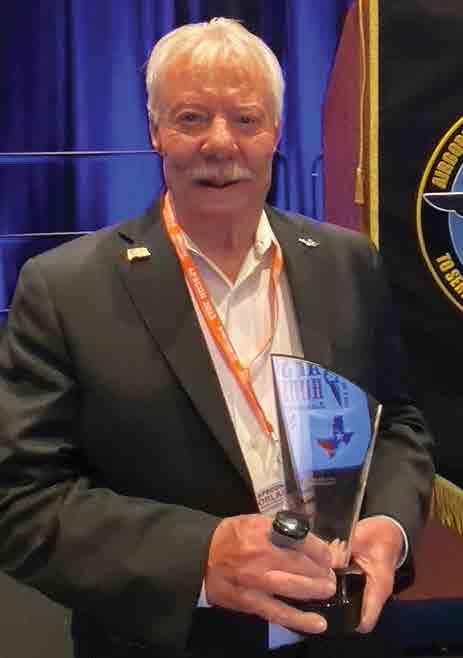
"It was nice to be recognized with this award, but the real heroes are the men and women that use Night Vision Goggles daily to help serve and protect every community in our nation," said Atwood. "Seeing so many long-term customers, friends, and industry leaders was great."
In 1968, APSA began to present this award to members to support and encourage the use of aircraft in public safety. APSA is a non-profit education, individual membership organization providing networking systems, educational seminars, and product expositions that members find invaluable.
This dedication can be measured by documented achievements in the areas of, but not limited to, management, safety, education and maintenance that significantly improved the safety of an airborne law enforcement unit or the airborne law enforcement industry.
Mike Atwood spent his 43-year career in the night vision industry with the U.S. Army, Idaho National Guard, Idaho National Laboratory and ASU. During this time in the various agencies, Atwood accumulated close to 2,000 hours flying under NVGs, starting with the first goggle ever approved for night flight, the AN/PVS-5 Cut-Away. He later advanced to the AN/AVS-6 Aviators Night Vision Imaging System and AN/AVS-7 ANVIS Heads-Up Display. Atwood served as an instructor pilot for the AH-64 Apache Attack Helicopter. Following his active Army service, he joined the Idaho National Guard as a pilot. He retired in 2000 with the rank of chief warrant officer 4.
The decorated pilot founded ASU in 1995 with the goal of clearing NVGs for use in civilian emergency medical services operations. Atwood and his team’s effort resulted in the Federal Aviation Administration authorizing NVGs for EMS personnel use in 1999. Since then, equipment and training provided by ASU has benefitted citizens around the world.
“I also want to thank all the men and women at ASU that share my passion for safety. NVGs are a vital part of the safety and security of nighttime operations. Every week, you can find ASU employees worldwide helping law enforcement agencies, emergency medical services, air ambulance operations, search and rescue missions, and other local, state, federal and national operators learn to use NVGs. I received this award, but truly this award belongs with everyone ASU that has championed the message of using NVGs," concluded Atwood.
ASU has put more than 5,000 NVGs into EMS operations world-wide and modified aircraft lighting in nearly 1,500 individual aircraft. Additionally, the company has subsequently provided training to more than 6,000 pilots and crewmembers.
● APPROVED AROUND THE WORLD!
● PILOT IS ALWAYS IN CONTROL
● REDUCED PITCH - UP
● SIMPLE, USER FRIENDLY & RELIABLE


● SHAPE, SIZE AND DENSITY OF THE DROP PRODUCED TO MAXIMIZE FIRE CONTROL

● FULL SALVO DROP IN LESS THAN 2 SECONDS
● 4 LEVEL DUMP CONTROL
● APPROVED ALL MODEL OF AIR TRACTOR & THRUSH 660/710

● 20 YEARS PROVEN TRACK RECORD OF RELIABILITY & SAFETY


For more than two decades, Flagler County FireFlight has relied on the Airbus H125 helicopter to carry out missions extending far beyond firefighting. Currently operating the oldest “B3 A-Star” in North America, they’ll soon experience significant upgrades with the addition of a new H125.
Flagler County, spanning 571 square miles in northeast central Florida with approximately 20 miles of coastline along the Atlantic Ocean, has experienced its fair share of destructive wildfires. In 1985, the Palm Coast fire ravaged 250 homes, and in 1998, the state of Florida found itself engulfed in a massive firestorm. This resulted in the largest aerial fire suppression event in the U.S. to this point, with firefighting agencies from 44 states joining forces to suppress the flames.
Flagler County was not spared from this event, losing 71 homes, with an additional 165 homes suffering damage. The economic toll amounted to over $16 million in structural damages and a staggering $328 million in timber losses. It was determined that if Flagler County Fire & Rescue had a helicopter, with the top priority of fire suppression, the number of homes lost and damages sustained could have been significantly reduced.
It was in the wake of these catastrophic events that Airbus Helicopters introduced a new, more powerful aircraft which could aid in fire suppression efforts—the AS350 B3. In 2002, the first AS350 B3 in North America, with serial number 2968, found its home in Flagler County. Adopting the call sign “FireFlight” and bearing the tail number N911US, the helicopter quickly became an indispensable asset in the firefighting arena.
“The Airbus helicopters AS350 B3 platform has been a powerhouse in every mission we fly,” said Todd Whaley, Flight Operations Chief for Flagler County FireFlight. “Due to its modularity and flat deck design, we can reconfigure into each mission profile in less than ten minutes. We have a chase truck with additional jet fuel and firefighting foam that will respond to an active wildfire event, which greatly increases our time on station to allow for the maximum amount of water to be delivered.”
The helicopter, equipped with a 210-gallon Bambi Bucket, has since dropped nearly 2 million gallons of water and firefighting foam on hundreds of wildfires throughout Flagler County and its surrounding areas. FireFlight takes the initiative during fire season, often being the first and only asset on the scene, initiating initial attack and promptly calling in additional resources as necessary. This proactive approach has proven effective in tackling wildfires in their infancy, preventing them from escalating into large-scale, newsworthy events.
“I look forward to the significant upgrades, and power that the new H125 offers, along with its ease of maintenance, availability of parts and spares and overall, the great customer service I have received from Airbus and Safran alike. I know this personally, as I am also the helicopter mechanic,” said Whaley. “And when I engage into a firefight I do so with the utmost confidence in this workhorse. The old B3 has been reliable and has proven herself time and time again, and I expect the new H125 to perform on a whole new level. I once heard Airbus helicopters describe our unit as the Swiss army knife of the industry. My description is just another day at the office.”
The fully compliant Digital P25 TDFM-136B series radios offer a critical piece of your fleet’s communication and coordination efforts. Call today to learn why Technisonic has more forest service certified airborne radios than any other manufacturer.



Tom Archer, also known as Papa to his grandchildren, was a remarkable man who wore many hats throughout his life. He was a proud husband, father, grandfather, helicopter pilot, aerial firefighter, ag pilot, and lifelong farmer who left an indelible mark on all who knew him. Two familiar slogans, “You light ‘em, we fight ‘em” and “Where I go, weeds don’t grow,” were printed on his business cards, reflecting his can-do attitude and his ability to get things done.
Tom was born to Richard and Dorothy Archer in Oklahoma in 1952, with the family later settling the Archer Family homestead near Waitsburg, Washington. As a child, he worked on the farm, driving grain trucks and combines on some of the steepest hills in Columbia County. He attended
Waitsburg High School. After graduating in 1970, he attended Big Bend Community College’s Aviation program and earned his commercial and private pilot’s license in 1972.
Tom’s aviation career spanned over 40 years, during which he logged countless hours of flight time. He was known as one of the few pilots contracted to fly in the most perilous conditions. As a helitack pilot, he transported wildland firefighters to remote locations, conducted initial attack water bucket drops on forest fires, and flew search and rescue missions in the mountains. He was also the owner and operator of Archer Aviation, where he flew ag aviation, aerial firefighting, and even dried acres of cherry trees after heavy rain.



The goal when using aircraft to fight wildfires is to help suppress fires as quickly as possible, effectively reducing their size, threat and loss of life, property and resources. Incorporating the liquid-concentrate water enhancer, BLAZETAMER380, increases the effective capacity of all aircraft when used for direct attack of wildfires.
Water remains the most-used suppressant for wildfires and when delivered with ground-based equipment, is very economical and efficient. Water is a precious commodity, and in today’s climate with environmental concerns, and the cost of fire suppression aircraft, water that is aerially delivered to wildfires should be enhanced with BLAZETAMER380 to provide the most suppression value for every drop.
“How are we ever going to make improvements if we are not willing to try new things”, says Jamie Knight, Aviation Operations Specialist for the Oregon Department of Forestry (ODF). In 2023, the states of Oregon and Washington have both broadened their use of BLAZETAMER380, with the product being used for a variety of reasons throughout the country.
In Roseburg, Oregon, a SEAT Base has been established with BLAZETAMER380. The contracted AT-802’s are loaded using basic equipment on company service trailers. This type of base is extremely portable and allows aircraft to be positioned in areas that have high fire potential, rather than having them tethered to established airtanker bases. This is the original model that was developed for SEAT operations and can significantly reduce the initial response time and turn-around times to fires. SEATs either return to their service trucks to reload with the product, fly to the closest airtanker base, if needed, to load with retardant. Similar use of water enhancer is found at SEAT Bases throughout the USA.
In North Carolina, the state-owned and operated AT802’s carry BLAZETAMER380 in a reservoir that is located near the water hopper on the plane. This provides the option to deliver up to seven additional loads of water enhancer by flying to an airport near the fire that has trained personnel and a water source. Concentrate is injected into the water hopper as it is filled to adequately blend the product.
A contracted UH-60A+ Blackhawk is stationed in Klamath Falls, Oregon. This helicopter is configured with a Helitak tank with on-board injection capabilities.
The pilot is able to select the mix ratio on the controller and the correct amount of water enhancer concentrate is dosed into the water tank. This helicopter is one of the aircraft that has been approved by the USFS this year for an evaluation of on-board systems and the effectiveness of BLAZETAMER380. The state of Utah may also participate in this evaluation with a contracted S-61.
There are a total of nine FireBoss’ in the USA that are configured with on-board injection systems. The ODF contracts for two FireBoss’ at their base in The Dalles, while the states of Minnesota, Idaho and Washington contract for the remaining seven FireBoss’ that are based in multiple bases throughout these states.
BLAZETAMER380 is loaded into reservoirs and pilots have the option to use either enhanced or non-enhanced water, depending on the fire jurisdiction and situation. If FireBoss’ are not configured with on-board systems, they can be ground-loaded before they depart for initial attack.
The BIA has been using on-board injection of BLAZETAMER380 in their contracted FireBoss’ in Washington and Minnesota for the past several years. They have reciprocal agreements with the states of Washington, Oregon, Idaho, and Minnesota that allows all FireBoss’, regardless of the contracting entity, to use on-board injection on fires. The BIA provides an annual waiver to the federal policy that prohibits use of on-board injection.
The states of Alaska, Colorado, Washington and Oregon have exclusive use contracts for Large Airtankers (LATs). These aircraft can be loaded with BLAZETAMER380 as it is approved for use in LATs. In order for the most appropriate suppressant to be used according to firespecific conditions and tactics, these states have water enhancer available at established airtanker bases, in addition to retardant. Most recently, a Conair Q-400 delivered BLAZETAMER380 to a fire in Alaska while the state of Washington incorporated the use of a stateowned and operated Mobile Retardant Base in 2023 that is currently located in Olympia, and is capable of loading both retardant and water enhancer.
The most efficient way to incorporate BLAZETAMER380 is with aircraft configured with on-board injection systems. There are several manufacturers of these systems that are approved for use with BLAZETAMER380. Future use of on-board systems is being considered by the USFS. The MATOC for Type I Helicopters includes Exhibit 13, a provision for on-board injection of water enhancers.
SUPERIOR ALTERNATIVE
Replaces costly retardant, water, and foam for direct attack of wildfires.

COST-EFFICIENT
Save 80-95% compared to traditional retardants. Enhances water effectiveness, reducing flight time.
LIGHTWEIGHT ADVANTAGE
Weighing 8.3 lbs./gallon, 9% lighter than retardant. Increases aircraft safety in challenging conditions.
SAFETY FIRST
Manage risks, minimize flight hazards, reduces pilot exposure, and protect ground crews.
EFFICIENT FIRE CONTAINMENT
Reduces wildfire size, cuts crew and equipment time, and eliminates extended attack costs.
ECO-FRIENDLY
Reduces chemical impact. Over 99% water, 75% less toxic than common retardants, and 97% less toxic than foam.
WATER CONSERVATION
Make water count. BLAZETAMER380™ decreases water volume needed for fire suppression.
REDUCE CARBON EMISSIONS
Cut flight time and lower carbon footprint.
AerialFire spent some time with Peter Myers from Smith Myers, manufacturers of the Artemis system. A system designed to locate firefighters or members of the public and provide a communication link when all others fail. Read our Q&A and learn about the system that is saving lives.
AF: So the Artemis system has been operation globally for several years now. It has been cited as a game changer by many users including the Royal Norwegian Airforce, who are Norway’s Search and Rescue operator. Why do you think it has an application with the aerial firefighting industry?
SM: I’m convinced the features of Detect, Locate and Communicate are all very relevant in a firefighting scenario. Particularly given that this is a situation where other sensors, such as EO/IR & VIDAR would struggle to provide meaningful information. We can detect if there is anyone in an area of concern, either unknown persons, or ground based firefighters. We can locate them and display their location on a map, additionally we can broadcast a text message to everyone in the area or send a text/make a call to a specific phone.
AF: Can’t this be done on the regular cell phone service?
SM: Not if there is no local service, Artemis acts like your own cell tower, so out of service phones will find you. You can be looking for specific phones or any phones in the area, depending on your mission. Even if there is local network coverage you don’t get a location.
AF: What you are saying is that you can provide situational awareness. Displaying the positions of ground teams along with people you might be searching for, or who were unknown up to the point of detection.
SM: That is correct, Artemis could be used to broadcast a text message to phones in the area, warning of a change of wind direction, or a retardant drop, or asking if people need assistance, medical or otherwise. Simultaneously it can display hundreds of located phones. It could even be used as a back up for comms with ground assets.
AF: This sounds like quite a sophisticated system, is it easily fitted as an upgrade, or does it have to be factory fitted?
SM: The hardware itself is available in several different configurations. The T-U is around the size of a hard back
book and weighs around 3lb (1.4kg) The T-A which in addition to Cellular functions also has an AIS receiver along with PLB receive capability, weighs just over 9lb (4.2kg) Either system only requires two antennas, mounted on the belly of the aircraft.
AF: What about a display for the system?
SM: Artemis is controlled from a web browser; this could be from an existing screen or an electronic knee pad. It would even be possible to operate the system from the ground if there was a reasonable Air to Ground IP connection.
AF: Will the system offer integration with other mission systems?
SM: Artemis is already integrated with systems from Carte Nav, Shotover, Euronav, Fly Sight, Rapid Imaging etc. We also have interfaces to ATAK.
AF: So who are Smith Myers, and where did the company originate to where it is today?.
SM: Smith Myers have been designers of Cellular equipment for 36 years, starting off with test and measurement equipment for Cellular networks, then very specific designs for national and international agencies.
AF: So how come you only need two antennas, and a very compact device?
SM: Artemis has been designed in house by us specifically for this application, we didn’t have to compromise by using hardware designed for a shopping mall or some other application. Our receiver design has proprietary techniques to derive distance estimations very accurately without using received signal strength which is a less precise method. Our superior design complies with DO 160 G and Mil Std 810 G ensuring we don’t generate any spurious noise and we aren’t affected by exterior noise from other avionics. These standards include testing for ruggedness: vibration, shock, temperature, dust, water etc. All this adds up to a superior location system that can withstand the extreme environments that SAR operators must endure.
Peter Myers can be contacted at peter.myes@ smithmyers.com. To learn more about the Artemis sytem, visit www.artemis.smithmyers.com
“Work








In the last decade, the United Kingdom has seen an increase in large-scale fires, predominantly in the summer, ranging from fires in fields to moorlands and occasionally woodland areas. Some of the reasons are natural causes, as well as the usual careless individuals and arson. During July 2022, the country experienced the hottest weather on record, where temperatures reached 40 degrees Celsius (104 degrees Fahrenheit), and, as such, some areas received a red warning for extreme heat.
In May 1995, the London Fire Brigade (LFB) experimented with a sole Messerschmitt Bolkow Blohm (MBB) Kawasaki BK117C1 twin-engine helicopter for the purposes of observation (using an optical system) and aerial transportation of fire crews. The aircraft was leased by McAlpines (now known as Airbus Helicopters Ltd), and was only on trial and progressed no further.
A decade and a half later, in the southwest of the United Kingdom, the Avon & Somerset Fire Brigade had a Eurocopter EC145 for a trial, with the intent to carry a team of firefighters and their equipment to the likes of vehicular accidents, as a quick response unit. Again, it did not progress beyond a trial.
In 2013 Eurocopter trialed a purple EC145A (G-JESP) painted with the Fire Brigade logo around the United Kingdom, participating that summer in a multi-agency demonstration during the annual Royal International Air Tattoo (RIAT), held at Royal Air Force (RAF) Fairford (United States Air Forces in Europe - Africa bomber base), west of London. The demonstration was called Airborne Angels, including a former police Air Support Unit (ASU) Eurocopter EC135T2, and a new Devon Air Ambulance Trust (DAAT) EC135T2. The same airframe was exhibited at the bi-annual Helitech exhibition at the London Excel later in the Autumn.
In the last decade, no helicopters have been assigned to any of the Fire Brigades in the United Kingdom.
Managing Director of Airbus Helicopters in the UK, Lenny Brown, said: “We’ve put extensive effort into this sector in the UK in the past, and we still believe that helicopters have an important contribution to the nation’s national resilience infrastructure. As the threats and risks we confront become more complex and sophisticated, there is a growing requirement for specialized emergency response agencies to be urgently
deployed with their equipment, frequently over long distances and to remote locations. We believe that helicopters such as the H145 and H135, already the global workhorses of the law enforcement and EMS communities, provide the optimum solution to meet the operational units’ needs.We look forward to engaging with the appropriate authorities to explain our capabilities.”
“Additionally we are seeking to support the UK military in using its existing fleets of H135 Juno, H145 Jupiter and Puma helicopters for conventional firefighting operations as the incidence of wildfires grows year by year, driven by climate change. Over the last decade, this issue has grown in the UK from being almost non-existent to becoming a major demand on the nation’s firefighters with increasing threat to life and property. Although RAF Pumas have sporadically been deployed in emergencies, all of these helicopters can carry external water loads and all crews are trained in external load carriage with minimal additional training and modification needed to fulfill the role. We’re clear that our helicopters offer an elegant, low-cost solution to provide resilience against this growing problem.”
The exceptionally hot summer of 2018 caused fires to break out across several areas of the United Kingdom. Scottish helicopter operator Skyhook Helicopters in Fife used their Airbus AS350B3 Squirrel helicopters to aid the local fire brigade in combating a hill fire on the 33000-acre Attadale country estate in Strathcarron, in the Highlands, in the North-West of Scotland.
A month later, in July, a large fire broke out on Saddleworth Moors on the outskirts of Manchester. In response, there were over twenty fire trucks from the local Lancashire County Fire Brigade service, but crews also attended from as far afield as Tyne & Wear, on the opposite side of the country. There was a white 1979 Bell 205A-1 (N35EH), belonging to Heli-Lift, that was on a contract in the area for underslung load/ long line work, that assisted with firefighting as well as Scottish helicopter operator PDG Helicopters, with their Airbus Helicopters AS350B2 (G-PDGB), using their Bambi buckets to extract water from the nearby Dove Stone Reservoir.
Two years later, the Heli-Lift white Bell 205A-1 was again involved in assisting the Fire Brigade, this time in combating fire on Hatfield Moors in North Lincolnshire. The aircraft scooped water from the River Torne and local lakes to fight the fire.


Heli-Lift has been involved in supporting firefighting efforts since April 2011, when they were first called in to assist fire crews after a blaze spread on Marsden Moor, West Yorkshire, this one caused by a quad bike that had caught on fire. They also operate a 1977 Bell 212 in their fleet.
According to Stuart Ring, director of Heli-Lift Services Ltd, their fleet types are the largest in the United Kingdom to fight fires, despite their size, and says there are two bases in Yorkshire and Derbyshire, where the helicopters are forward-located. He believes that problems lie with a lack of funding within the emergency services and a general lack of understanding about using helicopters within the fire brigades. In his opinion, the field fire in Wennington, Essex, during July 2022, which spread to several houses, could have been contained if the Essex Fire Brigade had called for aerial support, as there is a nearby reservoir (north of the village) which could have been used for picking up water using a Bambi bucket. He also explained how the complexities between intervening in a fire on land in England itself and Scotland further complicate direct action. Scottish national parks and forests are managed by both the Forestry Commission and the separate Forestry and Land Scotland (FLS), and as such, it is easier to deal with them if there is a fire on land, whereas in the United Kingdom, a lot of ground is private.
Devon-based AH Helicopters Ltd have used their single-engine legacy MD Helicopters MD 500D and Airbus Helicopters AS350B3 Squirrel equipped with a Bambi bucket to combat the moorland fires on Dartmouth National Park in the very South West of the UK. They have also been asked to fly north to fight fires on Saddleworth Moor. According to Andrew Harvey, Chief Pilot, in his experience, the biggest problem comes with the reluctance (and at times embarrassment) of the fire brigade to utilize the helicopter as a firefighting tool, even when offered, and in one particular incident, it those who are in charge of the land themselves who are reticent and refusing airborne fire firefighting support. He cites the case where an area of the Brecon Beacons National Park (in Wales) was on fire for quite some time in the day, and he had called the person in charge of the park that night, to offer support only to be turned away with the surprising attitude of ‘let the area burn’, as the person responsible was off duty for the weekend and didn’t wish to be disturbed.
With regard to the 2019 Saddleworth Moor fire, Andrew described “13.5 hours flying in MD500, dropping 450 liters of water every 2.5 minutes”: over the ten days he dropped some 400,000 liters.
Last year, in July 2022, the village of Wennington, Essex, to the north of Greater London, was all but destroyed when the heatwave caused a fire in a field, quickly spreading over the residents’ back gardens and engulfing buildings. Fire crews from
more than seven different stations in the Greater London Fire Brigade attended the scene, as well as crews from the local area and further afield. This was not the only fire on that day, and fire services were severely stretched.
Such a response may not have been needed if aerial support had been available.
All the above are examples of incidents that have occurred in under a decade and a half in the United Kingdom, increasing in frequency and demonstrating the need for a dedicated aerial firefighting response.
The Royal Air Force (RAF) heavy and medium lift fleets, comprising the Boeing twin-rotor Chinook and Airbus Helicopters Puma, can perform aerial firefighting and assist the civilian authorities if need be. During the 2018 Saddleworth Moor fire, there was the option to call in the Chinooks with a Bambi bucket to extract water from local lakes, reservoirs and rivers, but it was not used. The likes of the Chinook and Puma belong under the tri-service Joint Helicopter Command (JHC), as all battlefield helicopters from the Royal Air Force (RAF), British Army Air Corps (AAC), and Royal Navy Fleet Air Arm (FAA)/ Commando Helicopter Force (CHF), fall under this.
Conservation strategies differ around the UK, with the National Trust, which manages and maintains many of the areas of natural beauty and importance in the country, carrying out controlled burnings over the Winter, on upland sites, or scrub removal to act as fire breaks come the Summer. But in the case of the Pennines and the South Yorkshire moors around Marsden, this cannot be done because the land is especially dry and degraded due to years of acid rain damage during the industrial revolution. This means the peat on these moors is very vulnerable, with much of it exposed. Burning these areas would cause even more damage.
There is a government petition highlighting the need for the UK to invest in aerial firefighting platforms. This is centered around the increase in wildland and moor fire as a result of the annual increase in temperatures over the summer. The UK government has been criticized in recent years for its lack of preparedness with regards to issues caused by climate change, including the increasing frequency of fires. Stuart Ring from Heli-lift told me he firmly believes the government should be taking a more responsible and central role in the response to these emergencies. Currently there is no nationwide agency, and emergencies are dealt with by local authorities in the initial response. Stuart feels the lack of a cohesive structure of command is, and has been shown to be, detrimental to combating wildfires.











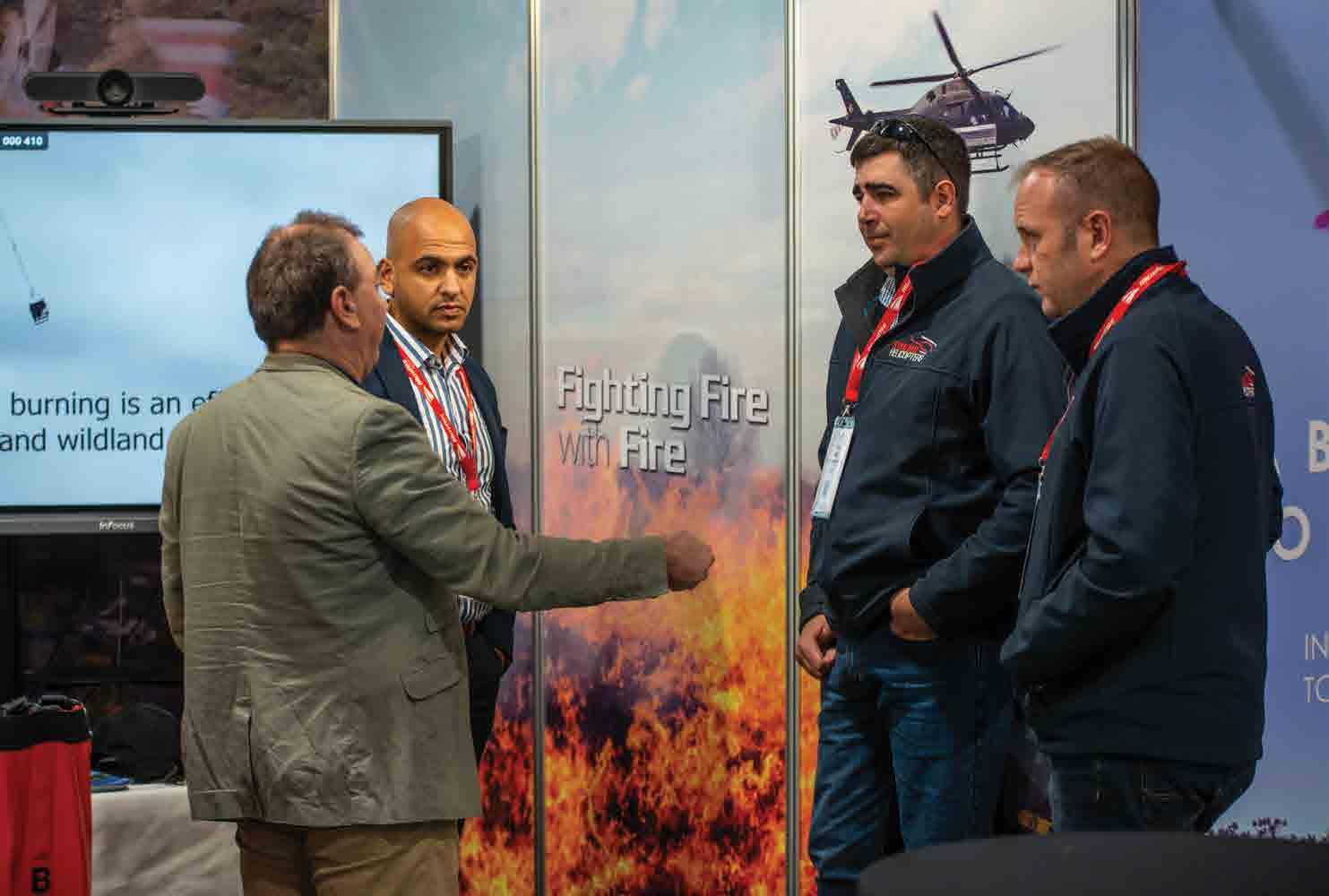
When looking through the previous locations of the Tangent Link Aerial Firefighting series of conferences with names like Athens, Greece, Nimes, France, Sacramento, California and San Diego California over recent years, the addition of Dubbo, New South Wales forced many to find it on a map as it was not an easily recognizable location. Dubbo, New South Wales to those from Australia is known for its worldrenowned open plains zoo, but to those attending from the United States and other countries, it was not a well-known location.
For those like myself that have been fortunate enough to have visited Dubbo previously, the small city of fewer than 50,000 inhabitants is also known for one other thing; its growing reputation as a hub for emergency services operations.
Although a five-hour drive from the center of Sydney, Dubbo is just a short one-hour flight from the much larger city of Sydney, and is also the home of the New South Wales Rural Fire Service (NSW RFS) Academy


and the soon-to-be-completed RFS Aviation Center of Excellence which were in walking distance of the Dubbo Regional Airport and the conference location on the grounds of the airport.
From the first event, the AerialFire/NSWRFS sponsored opening night mixer, it was clear to all in attendance that this show would be one for the record books, with record attendance at the APAC show from both conference attendees and vendors alike that filled the conference space to capacity, leading to the addition of extra convention space to accommodate a late influx of additional vendors.


The combination of organizers from the New South Wales Rural Fire Service, Tangent Link, and the organization and support of the City of Dubbo was flawless. From the opening reception onwards, conference attendees were treated to a world-class facility within the NSWRFS academy to facilitate the educational portion of the event, and a static display area packed with helicopters, UAS systems, and fixed-wing assets used in aerial firefighting in Australia. ➤
 Conference attendees were treated to a state of the art facility in Dubbo, New South Wales for the APAC Aerial Firefighting show.
Conference attendees were treated to a state of the art facility in Dubbo, New South Wales for the APAC Aerial Firefighting show.





The static display area showcased both assets from state fire agencies like the NSWRFS and private industry that provided multiple helicopters and fixed-wing platforms staffed by knowledgeable experts able to showcase each aircraft and its capabilities when purposed with aerial firefighting operations. The star of the show at the static display was the late arrival of the newly acquired NSWRFS Boeing CH-47 Chinook that arrived early Tuesday morning after arriving from the United States earlier in the week. The largest helicopter aerial asset now owned by the NSWRFS drew large crowds for the entirety of the show from those looking to learn more about the aircraft and its future in Australia.
The three-day event showcased the best of aerial firefighting from around the APAC region and an engaging show program that kept the hundreds in attendance busy between conference sessions that included presentations from public agencies on what they had learned in aerial firefighting to private organizations like Kestrel and Coulson sharing some of the lessons learned and best practices shared with the
wider conference attendance that comprised of leaders from around Australia and the Asia Pacific region.



The show floor again showcased the best in aerial firefighting vendors that were well patronized throughout the entire event with so many vendors that last minute accommodations had to be made to fit the influx of vendors for the event.





In addition to the show, conference attendees were treated to a tour of the world-renowned Royal Flying Doctors Service at their experience center which is also on the grounds of the Dubbo Regional airport during the conference dinner on the Tuesday evening of the show. The friendliness and “Aussie Hospitality” of the staff at the academy, the airport, and the many restaurants and other businesses frequented by international conference attendees will long be remembered by those that attended the first APAC event hosted by the City of Dubbo and the New South Wales Rural Fire Service for yet another successful AFF show organized by Tangent Link.








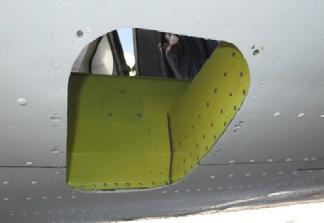



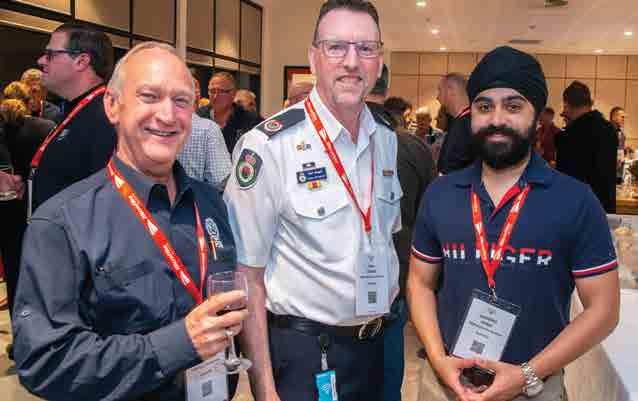




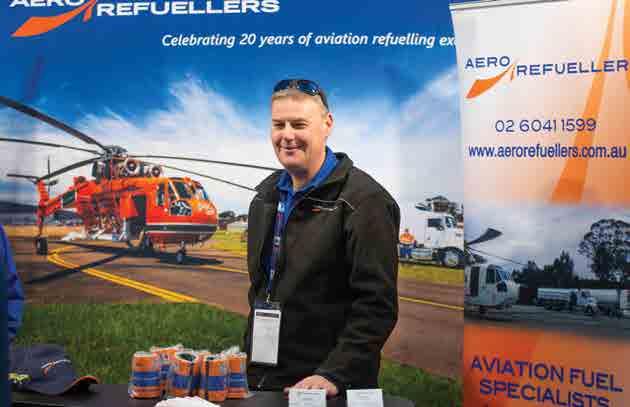


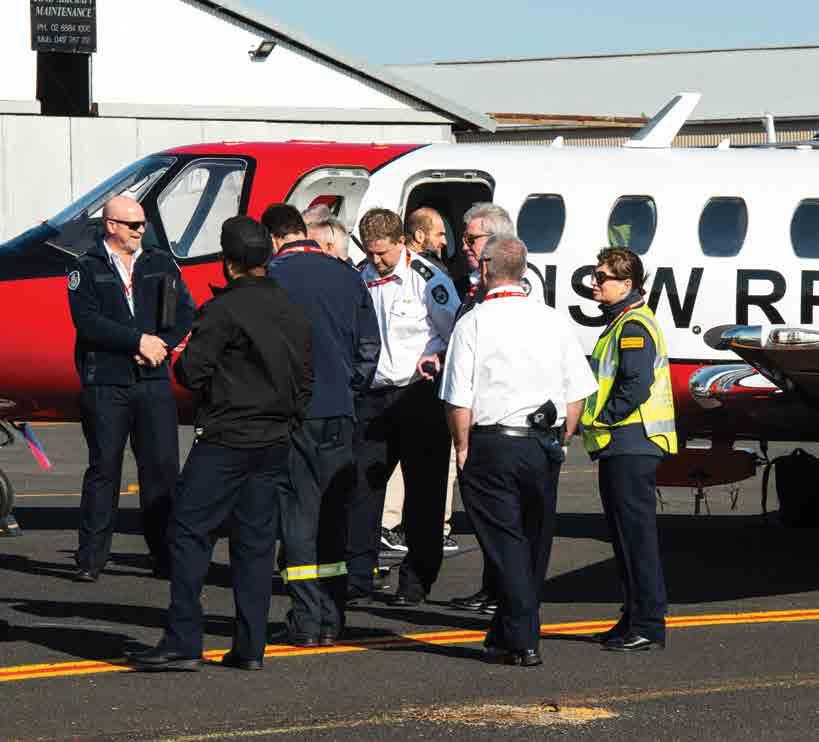



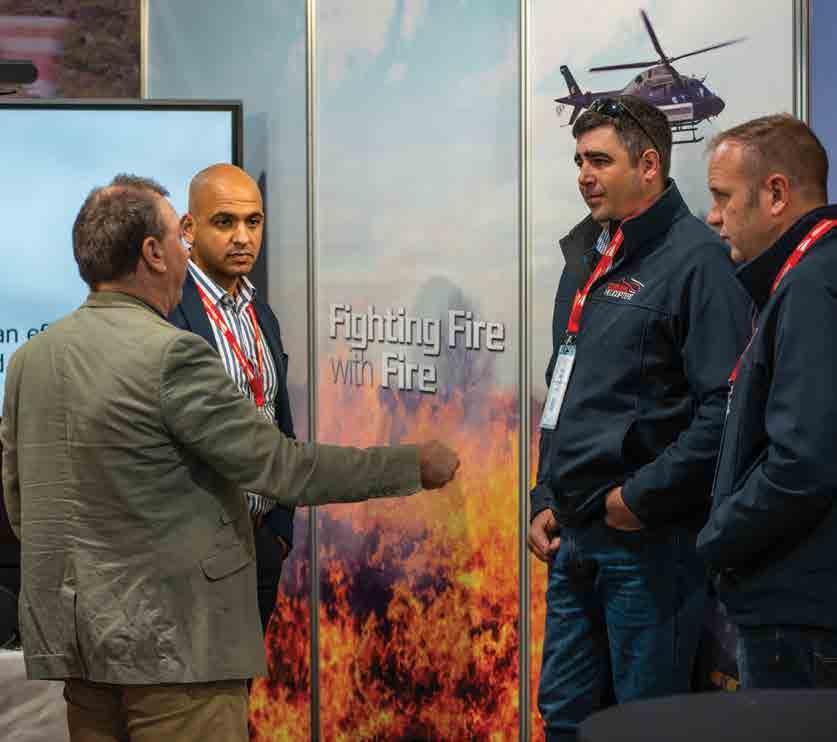

 Attendees dined at the Royal Flying Doctors Service for the conference dinner.
Attendees dined at the Royal Flying Doctors Service for the conference dinner.
aerial application industries. With a broad line of certified and custom helicopter equipment, ISOLAIR has the system to fit your company’s needs.Fromagricultural spray systems and bucket spreaders to firefighting systems, forestry grapples and torches, ISOLAIR can and will do it all!









With competitive pricing, qualityassurance, easy to install products, and an ongoing commitment to customer service, we welcome you to contact us. Ourfriendly andknowledgeablestaff is ready to answer your questionsand help youfind the ISOLAIR system that will best meet youroperational requirements.








The Hellenic Air Force (HAF) has one of Europe’s largest fleets of firefighting aircraft. On July 17, 2023, these aircraft became the first responders to assist the Hellenic Fire Service in tackling one of the largest blazes the country had ever faced to date. Massive wildfires erupted in several areas of the country, such as Attica, Corfu, Evia, Magnesia, and Rhodes, causing damage in excess of €600 million. The wildfire destroyed thousands of hectares of forests, buildings, and hotels and displaced over 20,000 people.
The 355 Firefighting Squadron, also known as 355 Tactical Transport Squadron (MTM) of the Hellenic Air Force, is equipped with eleven Canadair CL-215 firefighting aircraft based at Elefsis air base near Athens. The unit became involved in the battle against the catastrophic fires of July 17, early on the first day.

355th Tactical Transport Squadron (MTM), also known as a Firefighting Squadron, has a rich history dating back 76 years, the unit commencing operations for the first time in 1947. The 355th was initially headquartered at Ellinikos airport, its first aircraft, a Douglas C-47 Dakota transport aircraft. The squadron was originally named the 13th Light Bombardment Squadron. Moving to Elefsis airport near Athens in 1948. In 1950, the unit had seven C-47A’s. The unit and their ground and air crews were deployed to South Korea to participate in the Korean War, assisting the UN forces with transporting wounded personnel, cargo, and weapons transportation. Ten years later, the squadron had two of its C-47s again involved in another peacekeeping
mission to rescue a Greek element of the UN Peacekeeping force in Congo.
From airlifting military supplies and personnel from Elefsis to various air bases and airfields all around Greece, including in the Aegean and Mediterranean Islands, to performing tactical missions such as airdrops of Greek Army paratroopers were the tasks performed by the C-47s of the squadron. From 1968 to 1973, the squadron had five of its aircraft modified for air spraying missions for the benefit of the Greek Department of Agriculture. The aircraft was also capable of carrying water to use for firefighting missions.
A year after the end of air spraying missions with the C-47s, 355 Transport Squadron received its first Canadair CL-215s. Delivery of the CL-215s resulted in a change in the unit’s name. On December 22, 1975, the unit with five CL-215s in its service was named 355 MTM (Tactical Transport Squadron). A year after, another branch of the Hellenic Air Force, the 359 MAEDY (Public Services Air Support Unit), started operating firefighter aircraft, utilizing ten Grumman G.164A Ag-Cats. Thus, 359 MAEDY became the second unit in the Air Force to have aircraft dedicated to this mission in 1974.
From 1973 to 1979, HAF received eleven CL-215s, which all were put into service with 355 MTM. Five more CL215s were later procured and received in the 1980s. The challenging and dangerous firefighting missions performed by the aircraft resulted in losses of some aircraft and their pilots. On May 26, 1977, and July 18, 1978, the unit lost two aircraft, 1042 and 1050 serial numbers, respectively. ➤

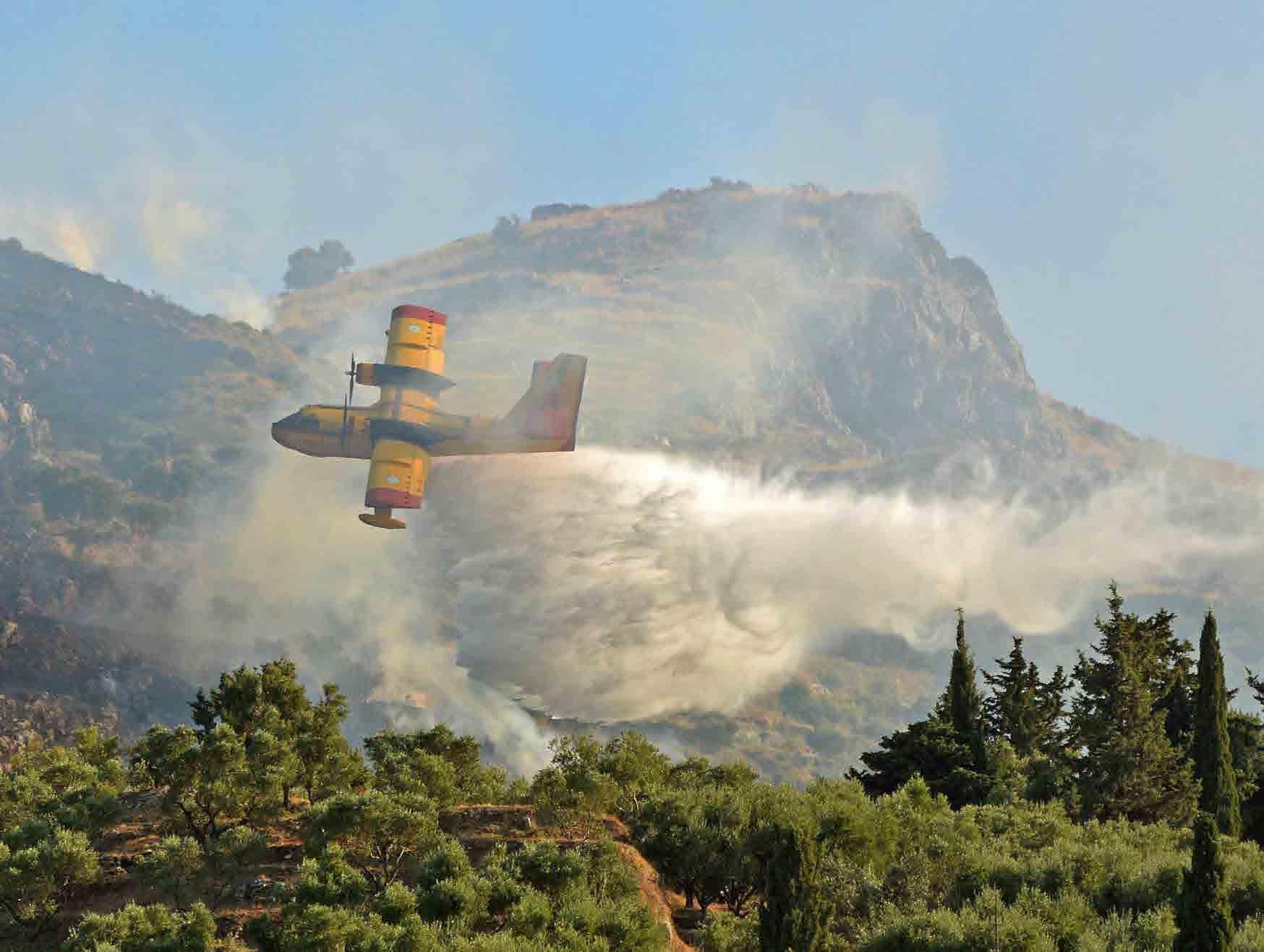 Images supplied by Babak Taghvaee and 355 Squadron Hellenic Air Force Public Affairs
Images supplied by Babak Taghvaee and 355 Squadron Hellenic Air Force Public Affairs
The first accident occurred during water scooping training near Korrnth, resulting in the death of all three crew members onboard. In contrast, the second aircraft was lost due to a fire initiated by a fuel leak near Ionia airport. None of its three crew members were harmed, although the plane was lost.
Equipped with a pair of Pratt & Whitney R-280083AM
18-cylinder radial piston engines, each making 2,100hp (1,600kW) power, a CL-215 can reach 291 km/h (181 mph, 157 knots) cruise speed and is capable of carrying 1,440 US gal (1200 imp gal, 5,450 L) of water, able to drop the load in 12 seconds. In addition, the aircraft of the 355 squadron can scoop salt water from the sea, and its water tanks can also be filled with retardant if needed by ground filling.
In 1997, Greece ordered ten CL-415s, which, with turboprop engines and improved avionics and other systems, were significantly superior to the CL-215. Their deliveries to the 355 MTM began in 1999 and finished in 2003. As the number of aircraft and personnel of the unit increased, HAF decided to form a second squadron using only CL-415s
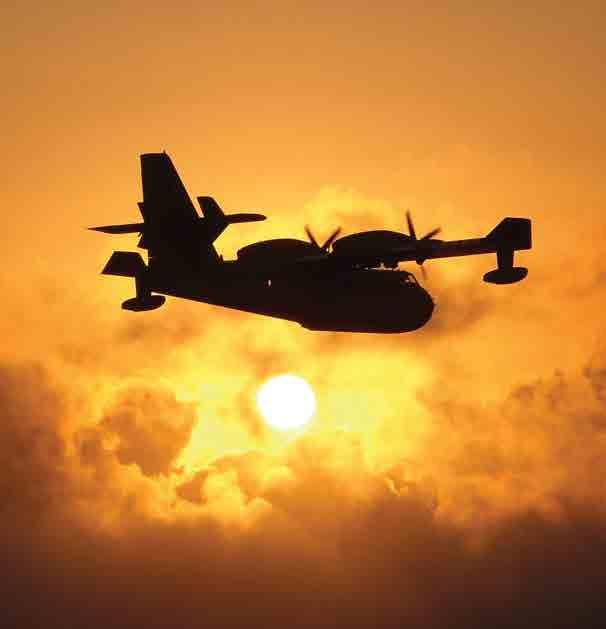
in Thessaloniki airport in the north of the country in 2003, leaving just CL-215s for the 355 MTM in 2004.
Before the loss of the CL-215 during the recent wildfires on July 25, 2023, 355 MTM always had nine of the unit’s eleven CL-215s ready for firefighting missions during every fire season, from April 30 to November 1. To achieve this operational readiness, the maintenance unit of 355 MTM has always performed organization-level inspections of all aircraft during the non-fire season at the maintenance hangar of the squadron in Elefsis Air Base. In addition, Hellenic Aerospace Industries (HAI) performs depot-level maintenance or overhaul of one CL-215 per year. Each CL215 needs one every six years.
Despite having piston engines, the CL-215 has one advantage over the CL-415: its higher acceleration rate. Thanks to this, CL-215 pilots can perform their drops in mountainous regions as short as 100 feet above ground. To achieve such a dangerous task, CL-215 pilots participate in one exercise before each fire season, usually in March or April every year. Before that exercise, CL-215 pilots renewed their water drop skills in a training area near Elefsis for one to two weeks.








Due to OPSEC (Operational Security), the Hellenic Air Force refused to share details of CL-215 pilot training and the process of selection of the pilots. The 355 MTM comprises 75 total staff members, with 26 as pilots and five as instructor pilots. During the winter, the instructors will train new pilots to join the squadron and perform check rides for existing pilots. Due to the lack of weather radar on board the CL-215s, the number of flying sorties performed by the unit in winter drops extensively.
Pilots serving 355 MTM are divided into two groups. The first are pilots who have been in the aircraft since the beginning of their careers, joining the 355 MTM right after graduation from the Air Force Academy. In contrast, the second group are former fighter pilots with thousands of flying hours on fighter jets, such as Dassault Mirage 2000EG and McDonald Douglas F-4E Phantom II. Ex-fighter pilots can join the 355 MTM after transition training under the supervision of the Air Force Flight Academy.
Those who join the squadron directly after graduation with the rank of 2nd Lieutenant have passed three years of training and have logged at least 150 flying hours. They first fly with Tecnam P2002JF primary training aircraft for 16 hours during the first year before their solo flight. After that, they have 19 more hours on the same type. After graduation from the primary flight training school, the trainees perform 48 hours of training flight on T-6A Texan II advanced pilot trainers in the second year and 54 to 70 more hours in the third year. After graduation, those selected to become CL-215 or CL-415 pilots pass training on T-2C/E Buckeye advanced jet trainers before joining 355 MTM.
While in 2019, Greece had 61 air assets available to battle wildfires in the fire season, this was increased to 89 in 2023. Among the assets available for battling the wildfires in 2019, 35 fixed-wing aircraft comprising ten CL-215s, six CL-415s and 19 PZL M-18 Dromaders belonged to the HAF, three MBB/Kawasaki BK-117C1 and two Aérospatiale AS
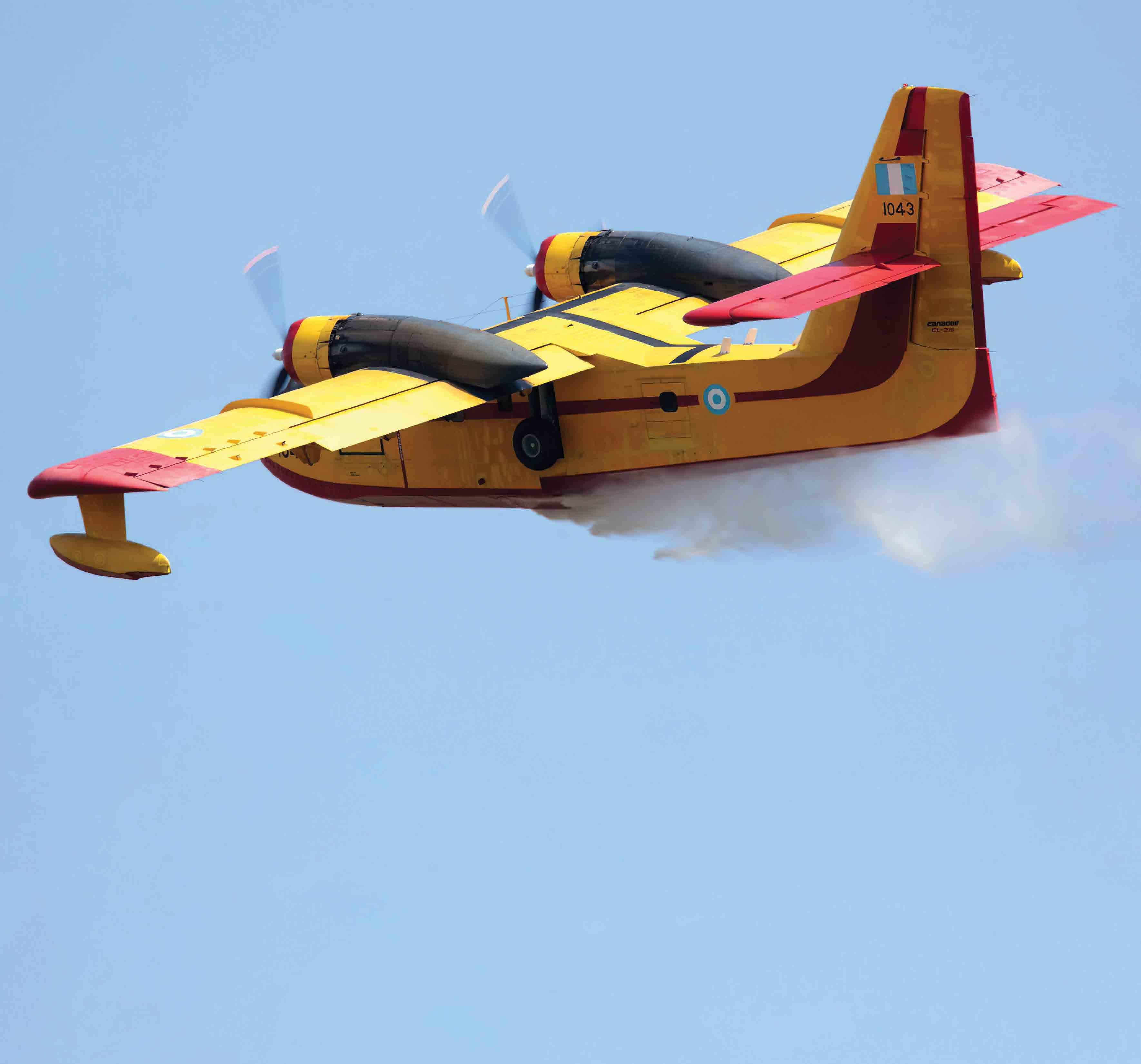
332L1 Super Puma helicopters belonged to the Hellenic Fire Service and three CH-47D/SD Chinook helicopters belonged to the Hellenic Army Aviation while the remaining 18 were leased civilian firefighter helicopters.
The 89 assets available for this task during the fire season of 2023 consisted of nine CL-215s, seven CL-415s and 16 M-18s, two Super Pumas and three MBB/Kawasaki BK-117C1s of the Hellenic Fire Service, three CH-47D/SD Chinooks of Hellenic Army, 17 leased Air Tractor AT-802Fs and 32 leased helicopters including eight Sikorsky/Erickson S-64 Skycrane helicopters from Erickson Inc. and multiple Bell 214 and Bell 214ST helicopters from McDermott Aviation Australia.

Despite having 89 aircraft and helicopters available for firefighting operations in Greece, the country needed more aerial firefighters to counter the massive wildfires of 2023. This put pressure on all the national assets, including CL215s of the 355 MTM and their air and ground crews. Due to the safety rules of the Hellenic Air Force, each one of the

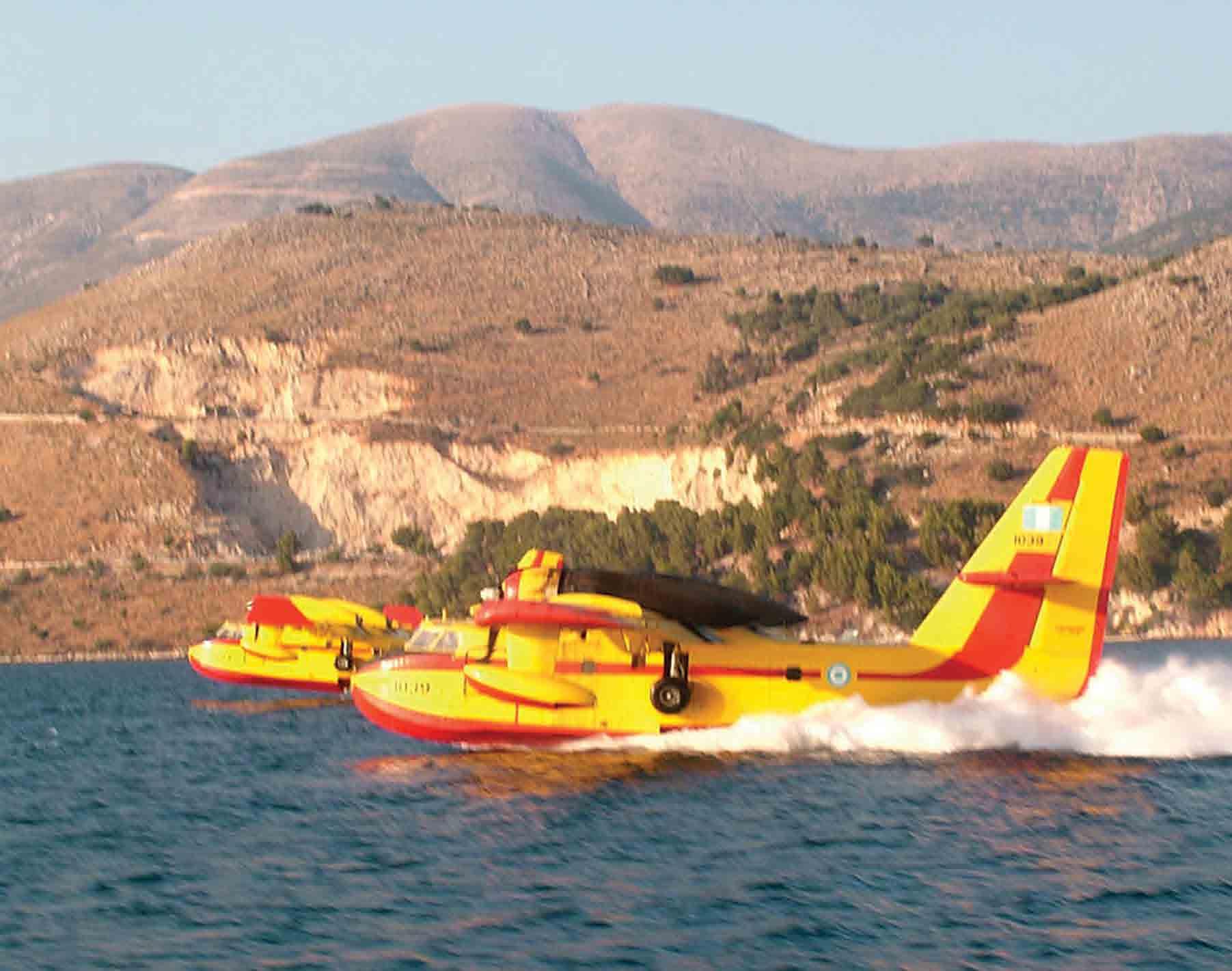
pilots serving with the 355 MTM is allowed to perform three missions per day, each lasting between two to three hours.
Despite all of the safety measures in place, one of the nine CL-215s of HAF involved in the firefighting missions crashed after its right wing’s float collided with a tree while dropping water on a wildfire on a hillside at Karystos at 14:52 local time on July 25, 2023. After the float separated from the aircraft, it collided with the right wing flap, resulting in loss of aircraft control, resulting in the aircraft banking right and crashing into the hillside. Pilot and co-pilot Squadron Leader Christos Moulas and Captain Periklis Stefanidis lost their lives in the crash.
To assist Greece in tackling the massive wildfire, 13 countries offered the support of their firefighters, fire trucks, firefighting aircraft, and helicopters deploying to Greece as the 89 firefighting aircraft and helicopters available in the country were not enough to fight the raging inferno engulfing several areas around the country. ➤

The Croatian Air Force deployed one CL-415 aircraft, the Egyptian Air Force deployed three CH-47D Chinook helicopters, the French Sécurité Civile deployed two CL415s, Italy’s Vigili del Fuoco deployed two CL-415s, the Israeli Police force deployed two AT-802Fs, along with the Royal Jordanian Air Force deploying two Mi-26T2 heavy helicopters and Turkish Ministry of Forests deploying two AT-802As and one TAI T-70 GMH Black Hawk helicopter to battle the wildfires.
The CL-415s of the Thessaloniki-based 383 MEEA (Special Operations & Air Fire Fighting Squadron) currently operate seven aircraft, including one of the two examples equipped with weather radar and side-looking radars (SLARs) that, in addition to aerial firefighting, is also used for maritime search and rescue duties in all weather conditions.
The 383 MEEA collaborates closely with the 31st SAROPS (Search and Rescue Operations Squadron). Its rescue divers fly with the CL-415s during search and rescue missions. To battle the massive wildfire in the North of Limassol in Cyprus in August 2023, two CL-415s with 2052 and 2054 were deployed to Larnaca to assist the Cypriot Forestry Department and Police Aviation Unit in battling the fires.
To reduce the pressure on the aging fleet of CL-215 and M-18 Dromader firefighter aircraft, as well as the small fleet of seven CL-415s in service of the Hellenic Air Force, the government of Greece is currently studying plans to acquire a large number of modern firefighter aircraft such as AT-802Fs equipped with floats till that happens, Greece will continue leasing civilian firefighter aircraft and helicopters during every fire season.




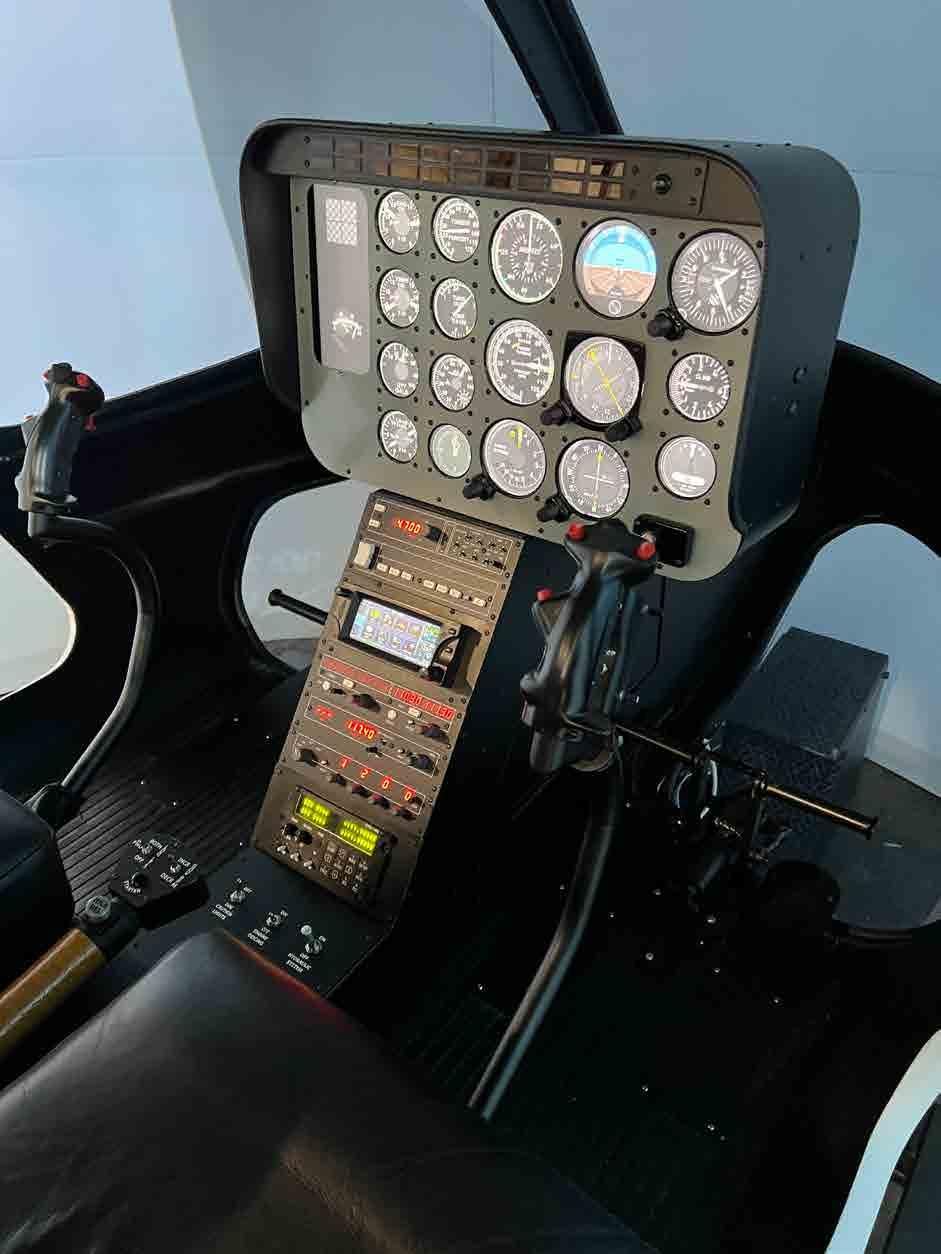

 Story and images by Jeff Serpa
Black Widow is based at Camarillo Airport in California
Story and images by Jeff Serpa
Black Widow is based at Camarillo Airport in California
Each fire season, more fixed-wing and rotary aircraft are added to aerial firefighting fleets in the private industry and government agencies, such as Cal-Fire and the Los Angeles County Fire Department. In addition to fighting fires, these versatile aircraft perform search and rescue missions and many other first responder missions.

The Blackhawk Helicopter is a proven military-designed machine that can withstand the physical stresses demanded by aerial firefighting missions. Since 2000, the Los Angeles County Fire Department has proven the operational performance of its S-70A Firehawk helicopters, saving lives and properties as part of its highly effective air operations unit, serving as the best example to an area that now boasts dozens of Black Hawks and Firehawks between public and private operators in the firefighting space.
Private companies entering the aerial firefighting industry looking to stand out offer helicopter services and aircraft that include aircraft with advanced equipment upgrades, nextgeneration training, and other services that play a significant role in the industry. Black Widow Helicopters is fast shaping up to be one of the leading companies modernizing Black Hawk helicopters for the firefighting industry. The Black Widow UH60 Black Hawk Modernization Program is designed to target older systems and airframes nearing obsolescence in military life that have become too costly to
maintain for the military and lack the functionality required to fit into ever-evolving mission requirements. The Black Widow program targets platforms such as UH60 in the aerial firefighting industry.
Black Widow Helicopters addresses the need in the global market for customized, modernized, former military helicopters that are repurposed for both the fire safety and personal/corporate aircraft markets. Their Uh-60 program focuses on solid aircraft with many cycles remaining on the airframe and engines and performance in line with newer aircraft. For the operator, these upgrades can extend the life of an aircraft for decades at a fraction of the cost of buying new, more costly aircraft.
Black Widow has partnered exclusively with Primehawx, allowing them to provide customers with the best UH-60 maintenance the industry offers.
Their state-of-the-art secure facility and US Armytrained UH-60 technicians allow them to offer periodic maintenance, heavy maintenance, paint, modifications, flight testing, training, and much more. The Black Widow UH-60 Black Hawk features an expansive, full-width, touch-screen glass cockpit with a customizable, state-of-the-art Interface, offering a selection of pilot-orientated mission modes, access to the Black Hawk’s main navigation, engine management, onboard equipment, and safety features. ➤
The cockpit panel is free of unnecessarily cluttered instrumentation in the quest for a more pilot-focused, up-todate, and seamless-looking appearance.

Black Widow President Barry Oberholzer, Vice President of the Black Widow Black Hawk program, and Primehawx President Michael Faris gave us a first-hand look at the facility in Camarillo, CA, the program, and a completed Black Widow Blackhawk that is ready for delivery.
Barry started in aviation in 2003. He has worked and flown helicopters for several companies, doing various types of flying and working on helicopters worldwide. He purchased a UH-1 Huey from Demmi Search and Rescue in Maine and started his UH-1 Modernization program, “giving new life to the flying legends.” Barry shifted his focus to the Black Hawk Helicopter as he saw the international Black Hawk demand in aerial firefighting. Black Widow’s primary mission is upgrades to Black Hawk Helicopters geared towards aerial firefighting missions. He has grown his team with professionals who know the industry very well. Barry is very hands-on and involved in every aspect of the Black Widow Black Hawk Modernization Program and the other services and programs his company offers. Black Widow currently has 21 Black Hawk Helicopters ready for its modernization program.
“Primehawx was created to serve the needs of the Black Hawk Community,” said Michael Frias, President of Primehawx. Frias started his career in the Air Force as a Pave Hawk crew chief with the 56th RQS. After completing his commitment to the Air Force, he pursued his interest in the civilian contract role. Michael has worked as a lead mechanic on contracts worldwide, including in Iraq and Afghanistan. His knowledge and experience with the Black Hawk Helicopter prompted his hiring at Bluesky Express, where he created a successful maintenance program from the ground up. Primehawx works exclusively with Black Widow Helicopters, providing the industry’s best Black Hawk maintenance.
Black Widow Helicopters and Primehawx continue to make strides in modernizing the Black Hawk Helicopter. Their program allows older machines to extend their life into the civilian world of aerial firefighting rather than sitting in a boneyard rotting away. They can modernize an aircraft using cutting-edge technology, many of which have a lot of life left in them.
Their state-of-the-art secure facility and US Armytrained UH-60 technicians allow them to offer periodic maintenance, heavy maintenance, paint, modifications, flight testing, training, and much more.





 by Ernesto Franzen
by Ernesto Franzen
Mylène Marionvalle was born and raised in Lesquin, a city in northern France, right next to the Belgium border. Seeing helicopters operating from a base near her home started her love for flying. Mylène studied agronomic engineering, and while still a student, she went to Brazil for several months, where she learned Portuguese in addition to the Spanish she also speaks. After
graduating, Mylène went to Saint-Cyr, the French West Point, to become an auxiliary officer flying helicopters in the Armée de Terre, the French army. Mylène logged 55 hours in the Airbus Helicopters EC120 Colibri at their flying school in Dax, but military life wasn’t for her. So she quit the Armée de Terre and pursued her aviation dream independently, turning to fixed-wing airplanes due to the lower cost. ➤
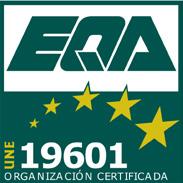
The AT-802F is one of the most famous firefighting aircraft in the world for its excellent performance to cost ratio. Designed for immediate action, the AT-802F can take off in just 5 minutes and be ready to fight.
The amphibious version, the Fireboss, exponentially multiplies the water dropped while maintaining all the features that make the AT-802F the reference aircraft for firefighting worldwide.
AT-802, the most cost-effective and efficient aerial firefighting aircraft of its kind.

Powerfull PT6A-67F engine
150 knots ferry speed, 105 knots drop speed
Dispatch in 5 minutes Accurate FRDS Gen III computerized firegate
+3 hours of sustained attack.
3.100 lts in just 15-seconds scooping
Able to use temporary bases close to fires

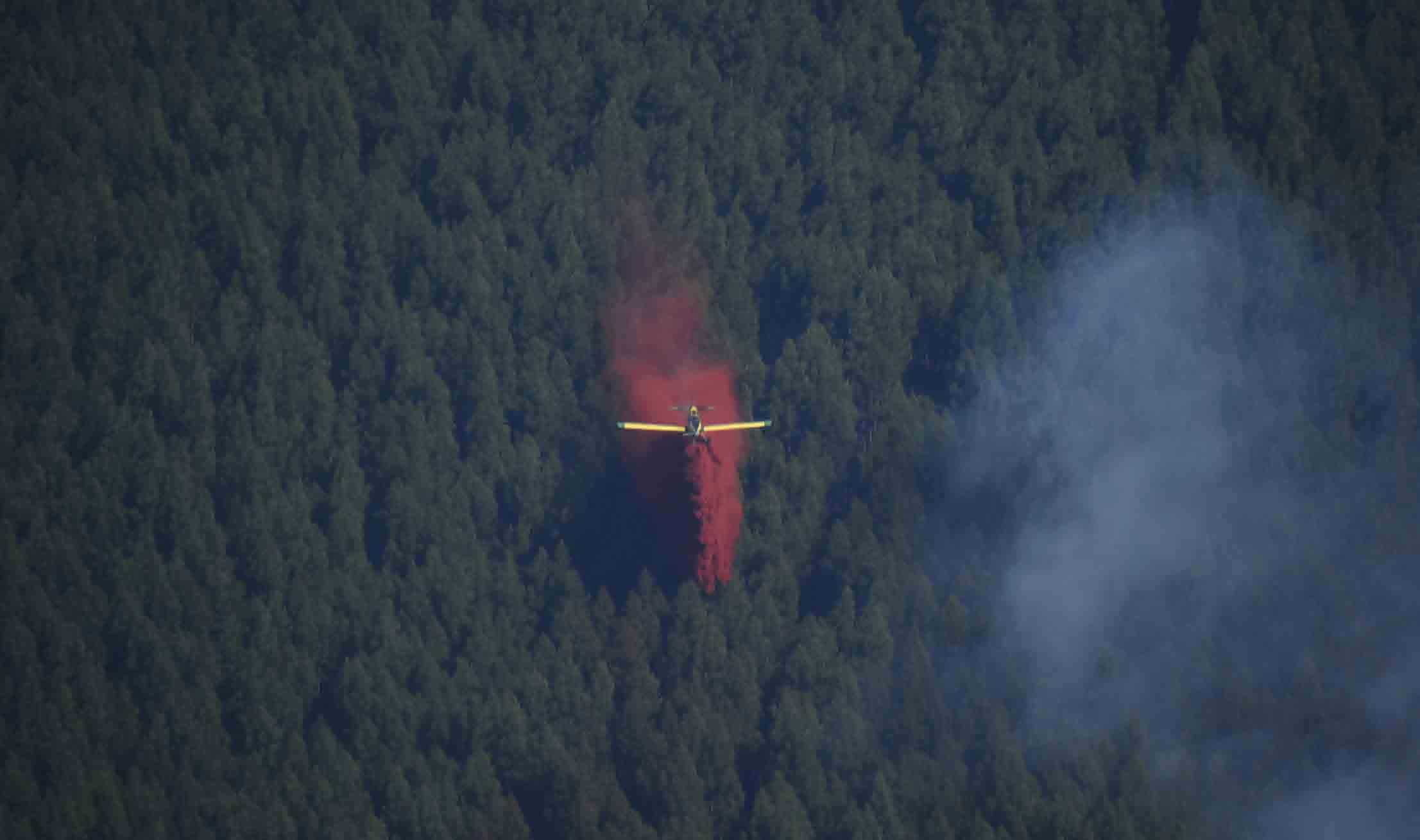
Mylène got her private and commercial pilot licenses and acquired varied flying experience. She flew a Piper Super Cub from mountain strips in France. An adventurous spirit, she flew humanitarian missions in the Central African Republic, taking medicines to distant communities and dropping food to rangers on the ground in an ICP Savannah, an aircraft registered in the LSA (Light Sport Aircraft) category, which allowed her to add flight time to her logbook and gave her lowlevel flight experience.
But most of Mylène’s flying experience in this period came from towing gliders in a Dyn’Aéro MCR R180. A little-known aircraft and “a rocket,” as Mylène describes it, she says that only five units of this experimental aircraft were produced, and only two are still flying, the other three having been lost in accidents. Its flight characteristics, with a stall that comes with little warning, made Mylène develop a smooth flying technique.
This unusual flying background and her experience operating a turbine engine in the EC120 helicopter earned Mylène her present job when the company she now flies firefighting missions for was recruiting pilots two years ago. She jumped at the opportunity and sent a resume. She didn’t hesitate to go to Madrid to pass a certification for her Spanish to fulfill all the requirements. ➤

Her qualifications got her the job, and the company trained her to fly the Air Tractor AT-802F and now Mylène is an accomplished firefighting pilot. Mylène flew her first fire season in Spain and her second in Chile, and now she is in her third season, again in Spain, this European summer.

Mylène says that according to DGAC, the French FAA, she is the first and so far only female pilot certified in France to fly the AT-802. To her knowledge, she is one of only two female firefighting pilots in Spain, the other being a Spanish woman who also flies an AT-802 for another Spanish firefighting operation.

The present abnormally hot summer in the northern hemisphere has caused a record number of wildfires and a tragic Canadair accident in Greece that took the lives of its two pilots. We wish you safe flights to Mylène Marionvalle and all the other firefighting pilots who are the first line of defense of the world against wildfires.

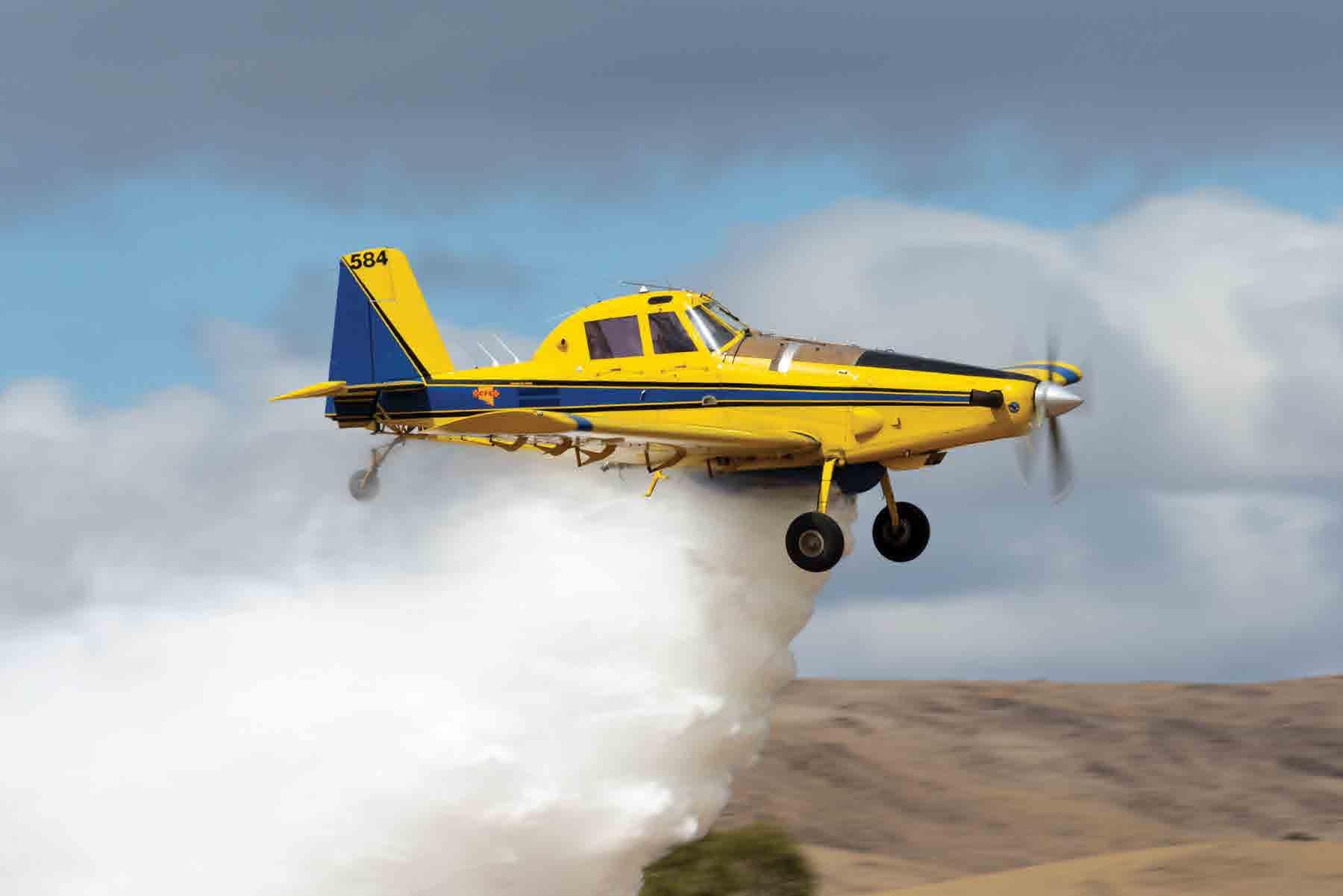
AT-802F
Adaptable. Effective. All-Season Versatility.
When fire season is over, this airplane pays its way in new roles. Multi-Role Capability.
Beyond firefighting, you’re getting a multi-resource tool for reforestation and land management. Season after season, dollar for dollar, hour for hour; the Air Tractor® AT-802F proves its value.
Scan to learn more about Multi-Role Capability
